Forums
- Forums
- Axis And Allies Forum
- General Discussion
- Aviation News
Aviation News
Post a reply
- Go to Next topic
- Go to Welcome
- Go to Introduce Yourself
- Go to General Discussion
- Go to Screenshots, Images and Videos
- Go to Off topic
- Go to Works in Progress
- Go to Skinning Tips / Tutorials
- Go to Skin Requests
- Go to IJAAF Library
- Go to Luftwaffe Library
- Go to RAF Library
- Go to USAAF / USN Library
- Go to Misc Library
- Go to The Ops Room
- Go to Made in Germany
- Go to Campaigns and Missions
- Go to Works in Progress
- Go to Juri's Air-Raid Shelter
- Go to Campaigns and Missions
- Go to Works in Progress
- Go to Skinpacks
- Go to External Projects Discussion
- Go to Books & Resources
-
 Main AdminMISAWA, Japan (Nov. 12, 2020) ? A P-8A Poseidon, assigned to the ?Fighting Tigers? of Patrol Squadron (VP) 8, takes off from Misawa Air Base during a training flight. VP-8 is currently deployed to Naval Air Facility Misawa, Japan conducting maritime patrol and reconnaissance and theater outreach operations within U.S. 7th Fleet (C7F) area of operations in support of Commander, Task Force 72, C7F, and U.S. Indo-Pacific Command objectives throughout the region. (U.S. Navy photo by Mass Communication Specialist 2nd Class Jan David De Luna Mercado)
Main AdminMISAWA, Japan (Nov. 12, 2020) ? A P-8A Poseidon, assigned to the ?Fighting Tigers? of Patrol Squadron (VP) 8, takes off from Misawa Air Base during a training flight. VP-8 is currently deployed to Naval Air Facility Misawa, Japan conducting maritime patrol and reconnaissance and theater outreach operations within U.S. 7th Fleet (C7F) area of operations in support of Commander, Task Force 72, C7F, and U.S. Indo-Pacific Command objectives throughout the region. (U.S. Navy photo by Mass Communication Specialist 2nd Class Jan David De Luna Mercado)
A U.S. Air Force F-16 Fighting Falcon pilot, assigned to the 77th Expeditionary Fighter Squadron deployed to Prince Sultan Air Base, Kingdom of Saudi Arabia, waves taxis down the runway of Al Udeid Air Base, Qatar, on Nov. 8 2020. As of Oct. 31, 2020, after rigorous training, Airmen deployed as parts of the 379th Expeditionary Maintenance Group and the 379th Expeditionary Logistics Readiness Squadron became qualified to run sustained 24-hour hot-pit refueling operations on any number of aircraft that rotate through AUAB. Hot-pit refueling allows aircrew to land, keep their aircraft engines running while they refuel, before taking off to continue the next leg of their respective missions. (U.S. Air Force photo by Staff Sgt. Kayla White)
Senior Airman Joshua Letona, assigned to the 379th Expeditionary Aircraft Maintenance Squadron, marshals an F-16 Fighting Falcon, assigned to the 77th Expeditionary Fighter Squadron at Prince Sultan Air Base, Kingdom of Saudi Arabia, on the flight line of Al Udeid AB, Qatar, before conducting hot-pit refuel training on Nov. 10, 2020. The training qualified AUAB Airmen assigned to the 379th Expeditionary Maintenance Group and the 379th Expeditionary Logistics Readiness Squadron to support 24-hour hot-pit refueling operations on multiple aircraft that rotate through the base. Hot-pit refueling allows aircrew to land and keep their engines running while they refuel, before taking off to continue the next leg of their respective missions. (U.S. Air Force photo by Staff Sgt. Kayla White)
An F-18F Super Hornet based out of Naval Air Weapons Station China Lake, California, is parked Nov. 10, 2020, at Travis Air Force Base, California. The F-18F along with the F-35 Lightning II were two of the aircraft seen by Dean ?Diz? Laird, a World War II pilot famous for confirming kills in both the European and Pacific Theater, and Clarence ?Bud? Anderson, three-time World War II flying ace, during a meet and greet with the aircraft?s pilots. (U.S. Air Force photo by Senior Airman Christian Conrad)
SIGONELLA AIR BASE, SIGONELLA, Italy ? Nov. 12, 2020 ? Northrop Grumman Corporation (NYSE: NOC) successfully ferried the fifth NATO Alliance Ground Surveillance (AGS) aircraft, via a non-stop transatlantic flight. The aircraft departed on Wednesday, Nov. 11 from Palmdale, California and landed nearly 20 hours later on Nov. 12 at Sigonella Air Base, Sigonella, Italy.
The air vehicle is the last of five NATO RQ-4D aircraft, thus completing deliveries to the Main Operating Base (MOB) of the NATO AGS system of systems comprised of aircraft, ground and support segments. Work remains to complete Handover of the AGS System to the NATO AGS Force (NAGSF).
?Once the NATO AGS system achieves Handover, NATO Commanders will have greater flexibility and redundancy to support the mission of protecting ground troops, civilian populations and international borders in peacetime and times of conflict as well as humanitarian missions during natural disasters,? said Jane Bishop, vice president and general manager, autonomous systems, Northrop Grumman.
The NATO AGS RQ-4D is based on the U.S. Air Force wide area surveillance Global Hawk. The high-altitude, long-endurance unmanned NATO AGS system, which includes the multi-platform radar technology insertion program radar, provides leading-edge intelligence, surveillance and reconnaissance capability that is able to deliver near real-time situational awareness 24 hours a day, seven days a week. Led by Northrop Grumman, the NATO industry team is comprised of companies from across NATO?s member nations, including Leonardo, Airbus, and Kongsberg and other defence companies from all AGS Procuring Nations.
Northrop Grumman solves the toughest problems in space, aeronautics, defense and cyberspace to meet the ever evolving needs of our customers worldwide. Our 90,000 employees define possible every day using science, technology and engineering to create and deliver advanced systems, products and services.
WICHITA,Kan. (Nov. 12, 2020) ?Textron Aviation today proudly celebrated the entry into service and first delivery of its Beechcraft King Air 360 turboprop aircraft. The event was commemorated in a special delivery to its launch customer ? Stamoules Produce Company, Inc. The California-based business selected the flagship King Air 360 as its first-ever aircraft purchase due to its combination of outstanding performance capabilities, ease of operation and the enhanced passenger experience, all of which will help expand the company?s growing operations.
The Beechcraft King Air 360 is designed and manufactured by Textron Aviation Inc., a Textron Inc. (NYSE:TXT) company.
The momentous occasion marks another major milestone for the legendary King Air turboprop lineup, which has been flying customers throughout the world for more than 50 years. The King Air 360 builds on a reputation of versatility and reliability, offering the latest technological advancements in the cockpit, a redesigned cabin and enhancements to passenger comfort.
?This is a special day for Beechcraft King Air turboprops as we begin a new era for such a beloved aircraft,? said Rob Scholl, senior vice president of Sales and Flight Operations for Textron Aviation. ?We are privileged to welcome Stamoules Produce Company to the Beechcraft family. This upgraded aircraft features innovative technology and next generation capabilities, and it will allow this launch customer an opportunity to transform the way they do business.?
Stamoules Produce Company is a family-owned business based in the San Joaquin Valley of central California, often referred to as the cantaloupe center of the world. Specializing in growing and harvesting fruits, vegetables and nuts on its 17,000 acre farm, Stamoules Produce Company has steadily expanded its business since it began in 1927.
?We?re very proud to be the launch customer of the new Beechcraft King Air 360,? said Katie Stefanopoulos, a family member, who will also serve as corporate pilot for the new aircraft. ?When selecting our first aircraft, we looked for a product that would not only give us the performance and flexibility we need to grow our business, but also by a company with a trusted name and expertise in the industry ? and we found that in the King Air 360 and Textron Aviation. We were excited to learn of the new upgrades and features to an already exceptional aircraft, and I am even more excited to fly.?
About the King Air 360
The King Air 360 cockpit features the addition of the Innovative Solutions & Support (IS&S) ThrustSense Autothrottle. The autothrottle supports pilots in their critical mission of delivering people or cargo by automatically managing engine power from the takeoff roll through the climb, cruise, descent, and go-around phases of flight. Another key update in the cockpit is the new digital pressurization controller, which automatically schedules cabin pressurization during both climb and descent, reducing pilot workload and increasing overall passenger comfort.
Other upgrades include a lower cabin altitude at the aircraft?s certified ceiling of 35,000 feet ? more than 10 percent lower when compared to the King Air 350i. The improved cabin altitude level provides greater comfort for passengers, especially during longer flights.
The redesigned cabin, meanwhile, features a stunning new look with craftsman-built cabinetry, partitions and side ledges, upgraded materials and finishes, along with all new interior schemes. Other amenities that come standard on the entire King Air lineup include pull-out work tables, power outlets, USB charging stations and a private aft lavatory.
King Air leadership
Nearly 7,600 Beechcraft King Air turboprops have been delivered to customers around the world since 1964, making it the best-selling business turboprop family in the world. The worldwide fleet has surpassed 62 million flight hours in its 56 years, serving roles in all branches of the U.S. military and flying both commercial and special mission roles around the world.
-
 Main AdminA B-1B Lancer assigned to the 34th Bomb Squadron is prepped for a Bomber Task Force mission from Ellsworth Air Force Base, S.D., Nov. 12, 2020. The mission enabled crews to remain ready to respond with lethal capability to any potential crisis or challenge across the globe. (U.S. Air Force photo by Airman Jonah Fronk)
Main AdminA B-1B Lancer assigned to the 34th Bomb Squadron is prepped for a Bomber Task Force mission from Ellsworth Air Force Base, S.D., Nov. 12, 2020. The mission enabled crews to remain ready to respond with lethal capability to any potential crisis or challenge across the globe. (U.S. Air Force photo by Airman Jonah Fronk)
A B-1B Lancer assigned to the 34th Bomb Squadron takes off in support of a Bomber Task Force mission from Ellsworth Air Force Base, S.D., Nov. 12, 2020. Bomber Task Force missions demonstrate how the Dynamic Force Employment Model enables strategic bombers to be anywhere on the globe at a moment?s notice. (U.S. Air Force photo by Airman Jonah Fronk)
A U.S. Air Force F-16 Fighting Falcon receives fuel from a U.S. Air Force KC-135 Stratotanker over the U.S. Central Command area of responsibility Nov. 4, 2020. The F-16 Fighting Falcon is a compact, multirole fighter aircraft that has proven itself in both air-to-air combat and air-to-surface attack. (U.S. Air Force photos by Master Sgt. Joey Swafford)

A U.S. Air Force F-22 Raptor participates in a training mission with a U.S. Air Force B-1B Lancer near Guam, Nov. 11, 2020. Having U.S. Air Force B-1B Lancers with the 9th Expeditionary Bomb Squadron at Andersen Air Force Base enables U.S. Air Force personnel the ability to conduct training missions alongside their fellow Airmen within the Indo-Pacific and potentially work with their counterparts from allied and partner nations within the region. (U.S. Air Force courtesy photo)
Rome 13 November 2020 .
Leonardo welcomes the announcement made by the U.S. Department of Defense to award AgustaWestland Philadelphia Corp. a 171 million USD modification to the previously awarded firm-fixed-price contract for the US Navy?s Advanced Helicopter Training System. This modification exercises options for the production and delivery of an additional 36 TH-73A aircraft, with work expected to be completed in December 2022 in Philadelphia, PA.
In January 2020 Leonardo, through AgustaWestland Philadelphia Corp., was awarded a firm-fixed-price contract valued at 176 million USD for the production and delivery of 32 TH-73A helicopters, initial spares, support and dedicated equipment, and specific pilot and maintenance training services. The TH-73A will be used to train the next generation of student aviators from the US Navy, Marine Corps and Coast Guard.
-
 Main AdminA U.S. Air Force, E-3 Sentry receives fuel from a KC-10 Extender over the U.S. Central Command area of responsibility, Nov. 15, 2020. The E-3 Sentry is an airborne warning and control system aircraft with an integrated command and control battle management surveillance, target detection, and tracking platform. (U.S. Air Force photos by Staff Sgt. Sean Carnes)
Main AdminA U.S. Air Force, E-3 Sentry receives fuel from a KC-10 Extender over the U.S. Central Command area of responsibility, Nov. 15, 2020. The E-3 Sentry is an airborne warning and control system aircraft with an integrated command and control battle management surveillance, target detection, and tracking platform. (U.S. Air Force photos by Staff Sgt. Sean Carnes)

An F/A-18E Super Hornet attached to the "Pukin Dogs" of Strike Fighter Squadron (VFA) 143 prepares to land on USS Gerald R. Ford?s (CVN 78) flight deck Nov. 14, 2020. Ford is underway in the Atlantic Ocean conducting first-ever integrated carrier strike group operations with Carrier Air Wing EIGHT, Destroyer Squadron TWO and their Air and Missile Defense Commander, Commanding Officer of USS Gettysburg (CG 64). (U.S. Navy photo by Mass Communication Specialist 2nd Class Kallysta Castillo)
An E-2C Hawkeye, attached to the "Bear Aces" of Airborne Command and Control Squadron (VAW) 124 prepares to land on USS Gerald R. Ford's (CVN 78) flight deck Nov. 14, 2020. Ford is underway in the Atlantic Ocean conducting first-ever integrated carrier strike group operations with Carrier Air Wing EIGHT, Destroyer Squadron TWO and their Air and Missile Defense Commander, Commanding Officer of USS Gettysburg (CG 64). (U.S. Navy photo by Mass Communication Specialist 2nd Class Kallysta Castillo)
An MC-130J Commando II and a CV-22B Osprey, both assigned to the 352d Special Operations Wing, prepare to perform a tilt-rotor air-to-air refueling over Sweden on November 13, 2020. Special operations forces create conditions for a rapid response to an imminent threat with land, air, and maritime capabilities to enhance stability in the Baltic Sea region. (U.S. Air Force photo by Master Sgt. Roidan Carlson)
U.S. Air Force B-1B Lancers participate in a joint training exercise during a Bomber Task Force deployment, Nov. 13, 2020, over the Pacific Ocean. Bomber Task Force missions demonstrate U.S. commitment to allies and partners throughout the Indo-Pacific area of responsibility and the ability of Air Force Global Strike Command to deliver lethal strike options for combatant commanders at a moment?s notice. (U.S. Air Force photo by Staff Sgt. Peter Reft)
Two U.S. Air Force B-1B Lancers sit on the flightline after participating in a joint interoperability exercise at Andersen Air Force Base, Guam, Nov. 13, 2020. The exercise enabled the aircrew to test long-range force packaging and demonstrate global reach capabilities in the Indo-Pacific region. (U.S. Air Force photo by Staff Sgt. David Owsianka)
Aircrew with the 9th Expeditionary Bomb Squadron raise the landing gear of a U.S. Air Force B-1B Lancer during take-off in a joint interoperability exercise at Andersen Air Force Base, Guam, Nov. 13, 2020. Participating in the exercise allowed B-1 aircrews to obtain training that could be imperative in the future missions as they continue to stay committed to the security and stability of the Indo-Pacific region. (U.S. Air Force photo by Staff Sgt. David Owsianka)
16.11.2020.
Another 18 Il-76 aircraft and two An-124 "Ruslan" aircraft of the military transport aviation of the Aerospace Forces of Russia with equipment and personnel of the 15th peacekeeping brigade sent to Armenia to participate in the peacekeeping operation in the zone of the Nagorno-Karabakh conflict, landing at the airfields of Yerevan city. Russian servicemen unloaded materiel, weapons and military equipment.
During the day, Russian Aerospace Forces planes delivered 58 pieces of equipment to Armenia - armored personnel carriers, off-road trucks, tank trucks, excavators, and other logistics equipment.
The Ministry of Defence of the Russian Federation continues to transfer Russian peacekeepers to the area of tasks in the Nagorno-Karabakh conflict zone.
To control the ceasefire and military operations, a peacekeeping contingent of the Russian Federation is deployed in the Nagorno-Karabakh conflict zone in the amount of 1,960 servicemen, 90 armored personnel carriers, 380 units of automobile and special equipment.
The core of the Russian contingent will be units of the 15th separate motorized rifle brigade (peacekeeping) of the Central Military District.
(Photos courtesy of the Ministry of Defence of the Russian Federation)
16 November 2020.
As the Bell Boeing V-22 garners attention from global military forces for its unparalleled capabilities, operators continue to showcase the tiltrotor?s benefits. Bell Boeing customer Japan Ground Self Defense Force?s (JGSDF) Transportation Aviation Group (TAG) officially began flight operations at Kisarazu Air Field on Nov. 6. Bell Boeing, in conjunction with the U.S. government, delivered the first V-22 aircraft to the defense force over the summer - a major milestone amidst a global pandemic.
"The JGSDF [Japan Ground Self Defense Force] is taking a big step toward integrating the V-22?s unique capabilities into its mission,? said Col. Matthew Kelly, program manager for the V-22 Joint Program Office (PMA-275). ?Beginning with Japan?s selection of the V-22 in 2015, it has been an honor working with our international ally and partner to make this program a reality.?
The quality and safety built into the V-22 has been battle-tested with global operators completing more than a half-million fleet flight hours of extensive operational and humanitarian efforts throughout the world. The V-22 offers a dynamic vertical takeoff and landing ability that allows it to access critical environments and navigate marine environments. It continues to perform missions day in and day out, transporting marines, airmen, sailors and soldiers to and from the fight over longer ranges and at higher speeds than conventional rotorcraft. This incredible platform enables the completion of tasks that were not previously possible before and saves lives, making it an exceptional asset in the military aircraft market.
WICHITA, Kan. (Nov. 16, 2020) ?Textron Aviation and Las Vegas-based private aviation charter operator, Thrive Aviation, today announced the delivery of three preowned Cessna Citation Sovereign+ business jets.
The midsize Cessna Citation Sovereign+ is designed and manufactured by Textron Aviation Inc., a Textron Inc. (NYSE:TXT) company.
Thrive Aviation is a private aviation company dedicated to providing proactive service and elevated flight experiences for its guests across North America. With a newly opened corporate headquarters at Henderson Executive Airport, Thrive Aviation?s footprint in Las Vegas includes an expanded, private 21,000 square foot hangar at Las Vegas McCarran International Airport.
?The delivery of these Citation business jets is a significant milestone for Thrive, which can now support a greater range of customers and accommodate their every aviation need ? a vision we share at Textron Aviation,? said Rob Scholl, senior vice president, Sales and Flight Operations, Textron Aviation. ?We appreciate the work that Thrive does and it?s exciting to witness their continued growth as they deliver passenger solutions for various mission profiles.?
"We are proud to carry nearly every Cessna Citation model,? said Curtis Edenfield, CEO, Thrive Aviation. ?We look forward to continuing our growth with Textron Aviation in our future expansion plans.?
By the end of 2020 fourth quarter, Thrive Aviation will boast an impressive offering of 11 Cessna Citation jets. The three Sovereign+ aircraft are currently going through extensive interior and exterior overhauls, including paint to match Thrive Aviation?s flagship livery design. These jets will join the company?s existing array of aircraft, including two Cessna Citation M2 entry-level jets, four Cessna Citation CJ3+ light-jets, and one Cessna Citation XLS+ midsize business jet.
?Since the global COVID-19 pandemic began, more people are looking to private aviation as a means of traveling while limiting the spread of the virus,? continued Edenfield. ?The delivery of these new aircraft will help us support increased demand and provide our clients with the well-being and peace of mind they seek for their families and businesses.?
Out of any OEM in the industry, Cessna Citations make up the majority of charter flights worldwide. With nearly 500 charter flights year-to-date, Citations continue to be the aircraft of choice for private jet operators. With class-leading amenities, performance and efficiency, Citations make great platforms for a variety of operations from charter to special missions.
With the broadest product line up in the industry, Cessna and Beechcraft products provide a wide range of platforms for those exploring the benefits of private aviation. From providing charter operators with aircraft to support their customers, to offering whole aircraft ownership solutions? Textron Aviation strives to find its customers the best solution to fit their needs.
?As individuals look toward private aviation as an alternative to commercial travel at a time when health and wellness are of the utmost importance, we pride ourselves on the ability to offer a wide range of aircraft to support the varying needs of individuals, businesses, charter and special missions operators,? continued Scholl.
The current Citation business jet family consists of seven models with seating configurations between seven to 12 passengers. The entry-level M2, comfortable CJ3+ and versatile CJ4 light jets all offer upgraded efficiencies with added speed and range while the best-selling midsize jet, the Cessna Citation Latitude and flagship Cessna Citation Longitude round out Cessna?s lineup of jets, providing customers with an aircraft fit for nearly ever mission.
11.16.2020.
As part of the UK commitment to our NATO allies, RAF aircraft and personnel will be exercising alongside our Turkish colleagues this week.
RAF Typhoons from IX(B) Sqn, RAF Lossiemouth, arrived at Konya Airbase this evening and will conduct training this week with Turkish Air Force F-16s.
(Photos courtesy of the MOD)


-
 Main AdminKC-135 Stratotankers assigned to the 171st Air Refueling Wing, Pennsylvania Air National Guard, sit on the flight line Nov. 15, 2020, near Pittsburgh. (U.S. Air National Guard photo by Senior Airman Zoe M. Wockenfuss)
Main AdminKC-135 Stratotankers assigned to the 171st Air Refueling Wing, Pennsylvania Air National Guard, sit on the flight line Nov. 15, 2020, near Pittsburgh. (U.S. Air National Guard photo by Senior Airman Zoe M. Wockenfuss)
NORTH ARABIAN SEA (Nov. 17, 2020) The Kiev-class aircraft carrier INS Vikramaditya (R 33) steams in formation while participating in Malabar 2020 in the North Arabian Sea. Malabar 2020 is the latest in a continuing series of exercises that has grown in scope and complexity over the years to address the variety of shared threats to maritime security in the Indo-Asia Pacific where the U.S. Navy has patrolled for more than 70 years promoting regional peace and security. Nimitz Carrier Strike Group is currently deployed to the 7th Fleet area of operations in support of a free and open Indo-Pacific. (U.S. Navy photo by Mass Communication Specialist 3rd Class Cheyenne Geletka/Released)
A 389th Fighter Squadron F-15E Strike Eagle connects to the boom of a KC-46A. Checkered Flag 21-1 is the first air refueling between 366th Fighter Wing aircraft and the new KC-46A Pegasus tanker during Checkered Flag 21-1, Nov.2, 2020, @ Tyndall Air Force Base, Florida. Checkered Flag is one of the Department of Defense's largest air-to-air combat exercises. (U.S Air Force photos by Maj. Mark Calendine)

A U.S. Air Force F-16 Viper pilot assigned to the 55th Fighter Squadron takes off while participating in the Weapons Systems Evaluation Program (WSEP) at Hill Air Force Base, Utah, Nov. 10, 2020. Evaluators from the WSEP team assess the effectiveness, maintainability and accuracy of precision guided air-to-ground munitions of squadrons across the Air Force at the Utah Test and Training Range. (U.S. Air Force photo by Airman 1st Class Destani K. Matheny)
Nov 17, 2020.
Along with these three new Czech pilots, one more pilot and five Gripen technical personnel are in Sweden for retraining. The objective of the refuelling exercise in Sweden was to train on the Swedish tanker C-130 Hercules. The exercise was also a great way to enhance interoperability of the Czech Air Force in the international environment.
"The in-flight refuelling procedure itself is not easy at all and requires precision from the pilot. It should be noted that the aircraft flies at a speed of over 500 km/h and the edge of the tanker basket is approximately 20 to 30 centimetres from the cabin at the time of connection," one of the Gripen pilots explained.
Since in-flight refuelling capability is also one of the major requirements for participation in NATO operations and other alliance exercises, trainings and re-trainings like these are important for the Czech Gripen pilots.
The Czech Gripen fighters recently completed 30,000 flight hours on the Remembrance Day, November 11, 2020. Over the last 15 years, the fighters have been instrumental in ensuring the protection and sovereignty of the Czech Republic airspace, and also in the Collective defence of NATO.
Budapest, Hungary, November 17th, 2020 ? The Hungarian Government and Embraer signed today a contract for the acquisition of two new generation multi-mission transport aircraft Embraer C-390 Millennium, in its air-to-air refueling (AAR) configuration, designated KC-390. Additionally, pilots and technicians training as well as other services and support are included in the contract as part of the process to strengthen the Hungarian Defence Forces capabilities specifically on the tactical airlift, AAR and medical evacuation roles as well as in other missions of public interest. Deliveries are scheduled to start in 2023.
?Following the procurement of personnel air transport capabilities in 2018, we will see the arrival of KC-390 aircraft to Hungary in 2023-24, able to deliver large military loads in an operational environment, as well as providing air-to-air refueling services. We are acquiring a multi-role transport fleet for the Hungarian Defence Forces to fulfill the widest possible range of tasks within the national framework, in a sovereign way,? said G?sp?r Mar?th, government commissioner responsible for defence development.
?We are honored for being selected by the Hungarian Government and the Hungarian Defense Forces to provide the most advanced multi-mission transport aircraft available in the market,? said Jackson Schneider, President and CEO of Embraer Defense & Security. ?Hungary is the second European nation and NATO operator to select the C-390 Millennium, a highly capable aircraft that offers excellent productivity through unrivalled combination of speed, payload and rapid reconfigurability for multi-mission operations.?
The KC-390 for the Hungarian Defence Forces will be the first in the world with the Intensive Care Unit in its configuration, an essential feature to perform humanitarian missions. The aircraft fully meets the requirements of the Hungarian Defense Forces, being able to perform different types of military and civilian missions including Humanitarian Support, Medical Evacuation, Search and Rescue, Cargo and Troops Transport, Precision Cargo Drop, Paratroopers Operations and AAR. These KC-390 are fully NATO compatible, not only in terms of its hardware but also in its avionics and communications configuration. Furthermore, the KC-390 probe and drogue refueling system means the aircraft can refuel the Hungarian JAS 39 Gripen as well as other aircraft that use the same technology.
The C-390 Millennium is fully operational and, since receiving its first aircraft in 2019, the Brazilian Air Force has deployed the airlift on several critical missions in Brazil and abroad with greater availability. Also, the Portuguese Government signed a contract for the acquisition of five C-390 Millennium in 2019 that are currently in the production line and will be in service in 2023.
The C-390 is a tactical transport jet aircraft designed to set new standards in its category. Some of the strong aspects of the aircraft are increased mobility, rugged design, higher flexibility, state-of-the-art proven technology and easier maintenance. Flying faster and delivering more cargo, both the C-390 Millennium and the KC-390 variant are the right sized platform for major deployment scenarios. Minimized interventions and on condition maintenance combined with highly reliable systems and components support the reduced downtime and costs, contributing to outstanding availability levels and low life cycle costs.
BAE Systems has received certification for its Identification Friend-or-Foe (IFF) transponder for the F-22 Raptor from the Department of Defense AIMS program office. The IFF transponder waveform integration is part of a U.S. Navy contract to upgrade the Multifunctional Information Distribution System Joint Tactical Radio System (MIDS JTRS) terminal for the U.S. Air Force.
BAE Systems? F-22 IFF transponder is integrated with a multi-channel subsystem, which is compliant with the new Mode 5 cryptographic standard and programmable with software rather than hardware. It is also compatible with the aircraft?s avionics equipment, which uses Link 16 and tactical air navigation system waveforms.
?This is BAE Systems? first IFF system on a fifth-generation fighter jet,? said Donna Linke-Klein, director of Tactical Systems at BAE Systems. ?This certification is an important milestone for our MIDS JTRS offering and an incredible achievement for our employees and customers.?
Certifying Mode 5 Level 2 capability in this transponder is a necessary step on the path to platform-level AIMS and Federal Aviation Administration certification. The AIMS program office ensures interoperability of IFF systems used by the U.S. and allied forces.
The MIDS JTRS terminal with IFF transponder is in production and undergoing ground and flight testing on-board the F-22 aircraft in preparation for platform-level certification. Operational release to the fleet is planned for 2021.
With more than 75 years of IFF experience, BAE Systems has delivered more than 15,500 transponders, 1,500 interrogators, and 6,000 combined interrogator/transponder systems. IFF products enable warfighters to identify friendly forces and make informed decisions in a variety of threat environments. They can be used on existing, new, and emerging platforms, including unmanned aerial vehicles, ships, fixed-wing aircraft, and helicopters.
The MIDS JTRS terminal is a Data Link Solutions product produced through a joint venture of BAE Systems and Collins Aerospace. MIDS JTRS is a four-channel radio that runs the complex Link 16 waveform plus up to three more communication protocols, including the Tactical Targeting Network Technology. The terminal can also host and provide computer processing to run routing and platform-specific applications, lowering the costs of integration.
-
 Main AdminA U.S. Air Force B-1B Lancer pilot conducts a pre-flight inspection during a Bomber Task Force deployment at Andersen Air Force Base, Guam, Nov. 17, 2020. BTF missions enable Airmen to continuously conduct operations throughout the world at a moment?s notice to help maintain global stability and security while enabling units to become familiar with operations in different regions. (U.S. Air Force photo by Staff Sgt. David Owsianka)
Main AdminA U.S. Air Force B-1B Lancer pilot conducts a pre-flight inspection during a Bomber Task Force deployment at Andersen Air Force Base, Guam, Nov. 17, 2020. BTF missions enable Airmen to continuously conduct operations throughout the world at a moment?s notice to help maintain global stability and security while enabling units to become familiar with operations in different regions. (U.S. Air Force photo by Staff Sgt. David Owsianka)
A U.S. Air Force B-1B Lancer takes off during a Bomber Task Force deployment at Andersen Air Force Base, Guam, Nov. 17, 2020. BTF missions demonstrate the ability of Air Force Global Strike Command to deliver lethal, ready, long-range strike options to geographic combatant commanders anytime, anywhere. (U.S. Air Force photo by Staff Sgt. David Owsianka)
A U.S. Air Force F-16 Fighting Falcon assigned to the 555th Fighter Squadron takes off from Aviano Air Base, Italy, Nov. 18, 2020. The F-16 supported an Air-to-Ground integration bilateral exercise and interoperability training at Manjaca and Glamoc Range in Bosnia and Herzegovina. Training engagements such as these strengthen our relationships, maintain joint readiness and reassure our regional allies and partners. (U.S. Air Force photo by Staff Sgt. Valerie Halbert)
U.S. Air Force pilots fly a KC-10 Extender in U.S. Air Forces Central area of responsibility Nov 17, 2020. The KC-10 delivers global reach to joint and coalition aircraft throughout the U.S. Central Command area of responsibility. (U.S. Air Force photo by Staff Sgt. Sean Carnes)
A U.S. Air Force KC-10 Extender conducts aerial refueling with an F-15E Strike Eagle in the U.S. Central Command area of responsibility Nov. 17, 2020. The F-15E Strike Eagle is a dual-role fighter designed to perform air-to-air and air-to-ground missions, demonstrating U.S. Air Force Central?s posture to compete, deter and win against state and non-state actors. (U.S. Air Force photo by Staff Sgt. Sean Carnes)
An F-35A Lightning II, assigned to the 356th Fighter Squadron, takes off during Arctic Gold 21-1 on Eielson Air Force Base, Alaska, Nov. 17, 2020. The F-35As at Eielson are strategically placed in Alaska to support the Pacific Theater and deter near-peer adversaries. (U.S. Air Force photo by Senior Airman Beaux Hebert)
KEY WEST, Fla. (Oct. 29, 2020) An F/A-18 Hornet from the "Fighting Omars" of Fighter Squadron Composite (VFC) 12 flies over Key West, Fla. while providing adversary support for the Strike Fighter Advanced Readiness Program (SFARP) for Carrier Air Wing (CVW) 1. VFC-12 is one of four Navy Reserve squadrons who function as the Navy's only professional airborne adversary support squadrons. (U.S. Navy courtesy photo)
18.11.2020.
As part of scheduled training flights, the crews of the Baltic Fleet naval aviation completed the tasks of night refueling of aircraft with fuel in the air over the Kaliningrad region.
In the course of combat training, the crews of the Su-30SM multipurpose fighters and the Su-24M front-line bombers performed air-to-air refuelling from the Il-78 Russian Aerospace Forces tanker at night. More than 10 aircraft were involved in the exercise. Air-to-air refuelling was carried out both singly and as part of a pair.
Air-to-air refuelling is one of the most difficult types of flight training. Pilots of the 1st and 2nd classes are allowed to refuel, the flight time of which is more than 400 hours. Trained pilots make the first 8-10 connections with instructors, then 3-4 flights independently. At an altitude of 2,000 to 5,000 m and at a speed of 500-600 km/h, the pilot must approach the air tanker at a distance of 10-15 m and, with the released boom, contact the refueling cone sensor, and then hold the place in the ranks until full refueling.
Air-to-air refueling is a necessary element of training for naval aviation pilots.
(Photo courtesy of the
Ministry of Defence of the Russian Federation)
A U.S. Air Force F-16 Fighting Falcon flies over the U.S. Central Command area of responsibility Nov. 15, 2020. The F-16 Fighting is a compact, multirole fighter aircraft that has proven itself in both air-to-air and air-to-surface attack. (U.S. Air Force photo by Staff Sgt. Sean Carnes)
A U.S. Air Force F-15E Strike Eagle flies over the U.S. Central Command area of responsibility Nov. 13, 2020. The F-15E Strike Eagle is a dual-role fighter designed to perform air-to-air and air-to-ground missions, demonstrating U.S. Air Forces Centrals' posture to compete, deter and win against state and non-state actors. (U.S. Air Force photo by Staff Sgt. Sean Carnes)
-
 Main AdminA U.S. Air Force F-15E Strike Eagle assigned to the 332nd Air Expeditionary Wing taxis on the flightline upon landing at Al Dhafra Air Base, United Arab Emirates, Nov. 17, 2020. The 380th Air Expeditionary Wing welcomed Airmen assigned to the 332nd AEW in order to demonstrate integration with fellow U.S. Air Forces Central partners and their collective flexibility to rapidly generate airpower. (U.S. Air Force photo by Staff Sgt. Zade Vadnais)
Main AdminA U.S. Air Force F-15E Strike Eagle assigned to the 332nd Air Expeditionary Wing taxis on the flightline upon landing at Al Dhafra Air Base, United Arab Emirates, Nov. 17, 2020. The 380th Air Expeditionary Wing welcomed Airmen assigned to the 332nd AEW in order to demonstrate integration with fellow U.S. Air Forces Central partners and their collective flexibility to rapidly generate airpower. (U.S. Air Force photo by Staff Sgt. Zade Vadnais)
U.S. Airmen assigned to the 332nd Air Expeditionary Wing perform post-flight procedures on a U.S. Air Force F-15E Strike Eagle assigned to the 332nd AEW on the flightline at Al Dhafra Air Base, United Arab Emirates, Nov. 17, 2020. The 380th Air Expeditionary Wing welcomed Airmen assigned to the 332nd AEW in order to demonstrate integration with fellow U.S. Air Forces Central partners and their collective flexibility to rapidly generate air power. (U.S. Air Force photo by Staff Sgt. Zade Vadnais)
A U.S. Air Force KC-10 Extender assigned to the 908th Expeditionary Air Refueling Squadron lands on the flightline at Al Dhafra Air Base, United Arab Emirates, Nov. 16, 2020. The 908th EARS transported 332nd Air Expeditionary Wing Airmen from an undisclosed location to Al Dhafra AB in support of U.S. Air Forces Central priorities. (U.S. Air Force photo by Staff Sgt. Zade Vadnais)
U.S. Air Force F-16 Fighting Falcon aircraft assigned to the 555th Fighter Squadron, Aviano Air Base, Italy, fly next to a KC-135 Stratotanker aircraft from the 100th Air Refueling Wing, Royal Air Force Mildenhall, England, after receiving fuel during an Air-Ground integration bilateral exercise with the Armed Forces of Bosnia and Herzegovina, over the Adriatic Sea, Nov. 18, 2020. This type of training improves Bosnian and broader European air capabilities and interoperability with U.S. and NATO forces for the full range of missions. (U.S. Air Force photo by Tech. Sgt. Emerson Nu?ez)
Air Force special warfare Airmen assigned to the 3rd Air Support Operations Squadron jump from an Alaska Air National Guard C-17 Globemaster III from the 176th Wing during airborne training over Malemute Drop Zone at Joint Base Elmendorf-Richardson, Alaska, Nov. 17, 2020. The 3rd ASOS special warfare Airmen conducted the airborne training to maintain their active jump status and ensure mission readiness in an arctic environment. (U.S. Air Force photo by Alejandro Pe?a)
ARABIAN SEA (Nov. 19, 2020) An F/A-18F Super Hornet, from the ?Mighty Shrikes? of Strike Fighter Squadron (VFA) 94, approaches the flight deck of the aircraft carrier USS Nimitz (CVN 68) while participating in Malabar 2020 in the Arabian Sea. Malabar 2020 is the latest in a continuing series of exercises that has grown in scope and complexity over the years to address the variety of shared threats to maritime security in the Indo Pacific where the U.S. Navy has patrolled for more than 70 years promoting regional peace and security. Nimitz Carrier Strike Group is currently deployed to the 7th Fleet area of operations in support of a free and open Indo-Pacific. (U.S. Navy photo by Mass Communication Specialist 3rd Class Cheyenne Geletka/Released)
ARABIAN SEA (Nov. 19, 2020) An F/A-18F Super Hornet, from the ?Mighty Shrikes? of Strike Fighter Squadron (VFA) 94, flies over the aircraft carrier USS Nimitz (CVN 68) while participating in Malabar 2020 in the Arabian Sea. Malabar 2020 is the latest in a continuing series of exercises that has grown in scope and complexity over the years to address the variety of shared threats to maritime security in the Indo-Pacific where the U.S. Navy has patrolled for more than 70 years promoting regional peace and security. Nimitz Carrier Strike Group is currently deployed to the 7th Fleet area of operations in support of a free and open Indo-Pacific. (U.S. Navy photo by Mass Communication Specialist 3rd Class Cheyenne Geletka/Released)
ORLANDO, Fla., Nov. 19, 2020 ? French and German C-130J? Super Hercules aircrews and maintainers will train in a facility located in France, built and equipped by Lockheed Martin (NYSE: LMT) for the countries? binational C-130J Super Hercules Squadron. Lockheed Martin will provide training devices, the learning management system, courseware and options for five years of training services under the terms of a new direct commercial sale (DCS) contract, allowing for in-country learning.
Lockheed Martin will break ground on the training center in 2021 and aircrew and maintainers will begin training in the center in 2024.
The training center will be located in ?vreux-Fauville Air Base in the Normandy region of France and will provide training for both C-130J-30 airlifter and KC-130J tanker aircraft under a first-of-its-kind partnership in the entire scope of 65 years of Hercules history where the countries share the aircraft, which are used for aerial refueling, air drop and cargo missions.
?The French/German C-130J Binational Training Center will allow both countries to train pilots and maintainers on the full capability of these proven aircraft,? said Tom Gordon, Lockheed Martin, vice president of Training and Simulation Solutions. ?Lockheed Martin is honored to support this historic partnership and proud to work directly with our customers in establishing a first-of-its kind resource that will benefit Super Hercules crew members for decades to come.?
The French and German binational squadron consists of a combined 10 Super Hercules aircraft. In 2018, Germany announced the acquisition of six Super Hercules aircraft (three C-130J-30s and three KC-130J fleets) to be operated in partnership with France. France has received a total of four Super Hercules aircraft through a Foreign Military Sale with the U.S. government. France?s Super Hercules are operated in conjunction with its existing C-130H fleet.
Lockheed Martin is the leading global provider of C-130J training and has experience creating
?turn-key? training facilities for the aircraft. Lockheed Martin?s own Hercules Training Center (HTC) is located in Marietta, Georgia, adjacent to the Super Hercules production line. The HTC is a combined academic and simulator facility purpose-built for training efficiency on the C-130J fleet. The HTC trains C-130J crews as needed and will be used to train France and Germany?s initial instructor cadre of pilots and maintainers during the construction of the new facility.
The C-130J Super Hercules is the current production model of the legendary C-130 Hercules mid-size tactical airlifter, offering superior performance and enhanced capabilities with the range and versatility for every theater of operations and evolving requirements. To date, the Super Hercules fleet counts 24 operators in 21 nations around the world and has surpassed 2 million flight hours.
As the preeminent tactical aerial refueling tanker, the KC-130J is a battle-tested solution that takes full advantage of the tremendous technological and performance improvements inherent in the C-130J Super Hercules aircraft. A true force multiplier, the KC-130J refuels both fixed wing and rotary wing aircraft as well as conducts rapid ground refueling.
Saint-Cloud, November 19th, 2020 ? During a visit to the Dassault Aviation plant in Seclin, in northern France, the French Minister of the Armed Forces, Florence Parly, today announced the upcoming notification of the contract for the ?Albatros? Maritime Surveillance and Intervention Aircraft (AVSIMAR) program, which will be based on the Dassault Aviation Falcon 2000LXS. In accordance with the multiyear military spending bill (LPM), the initial order is for seven aircraft, to be delivered from 2025, out of the planned total of 12.
Dassault Aviation and the dozens of French companies associated with the Falcon programs would like to thank the French Ministry of the Armed Forces, the French defense procurement agency (DGA) and the French Navy for their confidence.
The Falcon 2000 Albatros will feature a multifunction radar under the fuselage, a high-performance optronic turret, observation windows, a SAR (Search & Rescue) kit release system and dedicated communication systems.
In line with the aeronautical maintenance transformation policy initiated by the French Ministry of the Armed Forces, the Albatros contract commits Dassault Aviation to a guaranteed availability clause, favoring industrial support in close cooperation with Navy personnel for 10 years.
11.19.2020.
Today Typhoons from IX(B) Squadron continued to train alongside Turkish F-16s.
The opportunity to develop tactics and work with other air forces is invaluable whilst cooperation between the UK and such an important ally is essential to maintain and improve interoperability.
(Photos courtesy of the MOD)
-
 Main AdminA U.S. Air Force F-22 Raptor with the 94th Fighter Squadron prepares for flight operations out of Marine Corps Air Station Iwakuni, Japan, Nov. 19, 2020. The F-35 Lightning II and the F-22 Raptor, both 5th generation fighter aircraft, represent the pinnacle of advanced fighter attack aircraft capabilities and are strategically forward-postured in the Indo-Pacific to maintain regional peace and security. (U.S. Marine Corps photos by Cpl. Jackson Ricker)
Main AdminA U.S. Air Force F-22 Raptor with the 94th Fighter Squadron prepares for flight operations out of Marine Corps Air Station Iwakuni, Japan, Nov. 19, 2020. The F-35 Lightning II and the F-22 Raptor, both 5th generation fighter aircraft, represent the pinnacle of advanced fighter attack aircraft capabilities and are strategically forward-postured in the Indo-Pacific to maintain regional peace and security. (U.S. Marine Corps photos by Cpl. Jackson Ricker)

U.S. Air Force Maj. Josh Gunderson, F-22 Demonstration Team commander, flies above Maj. Cody Wilton, A-10 Demonstration Team commander, during a special formation flight over Fort Lauderdale, Fla. Nov. 20, 2020. This unique formation serves as a salute to all the men and women serving in the Air Force all across the world. (U.S. Air Force photo by Lt. Sam Eckholm)
U.S. Air Force Maj. Garret Schmitz, F-16 Demonstration Team commander, flies above Capt. Kristin Wolfe, F-35 Demonstration Team commander, during a special formation flight over Fort Lauderdale, Fla. Nov. 20, 2020. This unique formation serves as a salute to all the men and women serving in the Air Force all across the world. (U.S. Air Force photo by Lt. Sam Eckholm)
All four Air Combat Command Single-Ship Demonstration Teams fly together in a special formation in Fort Lauderdale, Fla., Nov. 20, 2020. Consisting of an F-22 Raptor, F-35 Lightning II, A-10 Thunderbolt II, and F-16 Fighting Falcon, this unique formation serves as a representation of all the men and women who serve in our Air Force all across the world. (U.S. Air Force photo by Lt. Sam Eckholm)
An F-15E Strike Eagle assigned to the 494th Fighter Squadron lands at Royal Air Force Lakenheath, England, Nov. 19, 2020. The 48th Fighter Wing conducts routine training in order to maintain combat readiness, and safeguard U.S. national interests and the collective defence of allies and partners. (U.S. Air Force photo by Airman 1st Class Jessi Monte)
An F-15C Eagle assigned to the 493rd Fighter Squadron takes off from Royal Air Force Lakenheath, England, Nov. 19, 2020. The 48th Fighter Wing conducts routine training in order to maintain combat readiness, and safeguard U.S. national interests and the collective defence of allies and partners. (U.S. Air Force photo by Airman 1st Class Jessi Monte)
WASHINGTON (AFNS) -- The Secretary of the Air Force selected Maxwell Air Force Base, Alabama as the preferred location to host the MH-139A Grey Wolf Formal Training Unit.
The MH-139 FTU?s mission is to train pilots in providing security and support for the nation?s intercontinental ballistic missile fields spanning Wyoming, Montana, North Dakota, Colorado and Nebraska. The MH-139 mission will replace the mission of the Air Force Reserve?s 908th Airlift Wing?s aging C-130Hs currently at Maxwell AFB.
?As the lead command for the Air Force's MH-139 helicopter fleet, bringing the MH-139 FTU online is an important step to ensure the nation?s Nuclear Triad remains safe, secure, effective and ready,? said Gen. Tim Ray, commander of Air Force Global Strike Command.
The new helicopter closes the capability gaps of the UH-1N Huey in the areas of speed, range, endurance, payload and survivability in support of AFGSC?s ICBM missions. Other mission capabilities include civil search and rescue, airlift support, National Capital Region missions, as well as survival school and test support.
?The MH-139 will be an absolute game changer providing increased intercontinental ballistic missile security in support of USSTRATCOM nuclear deterrence operations,? Ray added. ?The Grey Wolf will bring significantly improved capabilities, ready to rapidly deliver more defenders to missile fields while also providing increased convoy security.?
The Air Force will now conduct an environmental impact analysis before making its final basing decision in the winter of 2021. The first aircraft are scheduled to arrive in 2023.
(U.S. Air Force photo by Samuel King Jr.)
S?o Jos? dos Campos, Brazil, November 20, 2020 - Embraer and EDP, a company that operates in all segments of the Brazilian energy sector, have signed a partnership for electric aircraft research. Through its EDP Smart division, the Portuguese-based multinational announced a financial contribution for the acquisition of energy storage and battery charging technologies for Embraer?s all-electric demonstrator aircraft project, utilizing the EMB-203 Ipanema as its test bed. The prototype, which is already in development, is scheduled to complete its inaugural flight in 2021.
The investment is part of the cooperation agreement signed by both companies to advance their shared knowledge of energy storage and battery charging technologies for aviation - one of the main challenges of the project. The partnership aims to investigate the applicability of high voltage batteries for the electric propulsion systems of small aircraft, in addition to evaluating the main operating characteristics, such as weight, efficiency and power quality, thermal control and management, cycling loading and unloading, and operational safety.
?Embraer?s history of creating strategic partnerships through agile cooperation makes us one of the most recognized Brazilian companies for stimulating global knowledge networks, which in turn significantly increases the country's competitiveness,? said Lu?s Carlos Affonso, Vice President of Engineering and Corporate Strategy. ?It is a pleasure to welcome EDP into this scientific research endeavor designed to build a sustainable future. Innovation is one of the pillars of Embraer's new strategy for the coming years.?
?EDP aims to lead the energy transition to a low carbon economy. Our partnership with Embraer in the development of the company?s first 100% electric demonstrator aircraft represents a new frontier for our investment in electric mobility, which helps to position Brazil as a leading player in this market,? says Miguel Setas, President of EDP in Brazil.
Technological Cooperation
This proposal for the technological development of aeronautical electrification was initially created as a cooperation between Embraer and WEG, in May 2019. The project was developed as an effective and efficient instrument for training and for the maturation of technologies prior to their application in future products.
The scope of the partnership with EDP is to develop shared research in the storage of high voltage energy, complementing Embraer?s ongoing research. These research and development initiatives seek to accelerate the combined knowledge of the technologies necessary for the use and integration of batteries and electric motors in order to increase the energy efficiency of the propulsion systems of aircraft.
For the evaluations, a small single-engine aircraft is being used as the test bed to perform a primary assessment of electrification technologies. Ground tests have taken place at Embraer?s facilities in Botucatu, in the interior of S?o Paulo, in preparation for the first flight, which will take place at Embraer?s Gavi?o Peixoto unit.
Electrification is just one project in a series of initiatives being developed by Embraer and the entire aeronautical industry aimed at ensuring the commitment to environmental sustainability, as already exemplified by biofuel developments to reduce carbon emissions.
EDP has a global commitment to electrify 100% of its fleet by 2030, as well as to develop new offers and commercial solutions that promote the energy transition. Last year, during Aneel's Public Call on the topic of Efficient Electric Mobility, the Company approved an investment of about R$ 50 million in projects, via a Research and Development Fund consisting of both corporate and partner resources.
-
 Main AdminA U.S. Air Force F-15E Strike Eagle flies over the U.S. Central Command area of responsibility, Nov. 21, 2020. The F-15E Strike Eagle is a dual-role fighter designed to perform air-to-air and air-to-ground missions, demonstrating U.S. Air Force Centrals' posture to compete, deter and win against state and non-state actors. (U.S. Air Force photo by Staff Sgt. Sean Carnes)
Main AdminA U.S. Air Force F-15E Strike Eagle flies over the U.S. Central Command area of responsibility, Nov. 21, 2020. The F-15E Strike Eagle is a dual-role fighter designed to perform air-to-air and air-to-ground missions, demonstrating U.S. Air Force Centrals' posture to compete, deter and win against state and non-state actors. (U.S. Air Force photo by Staff Sgt. Sean Carnes)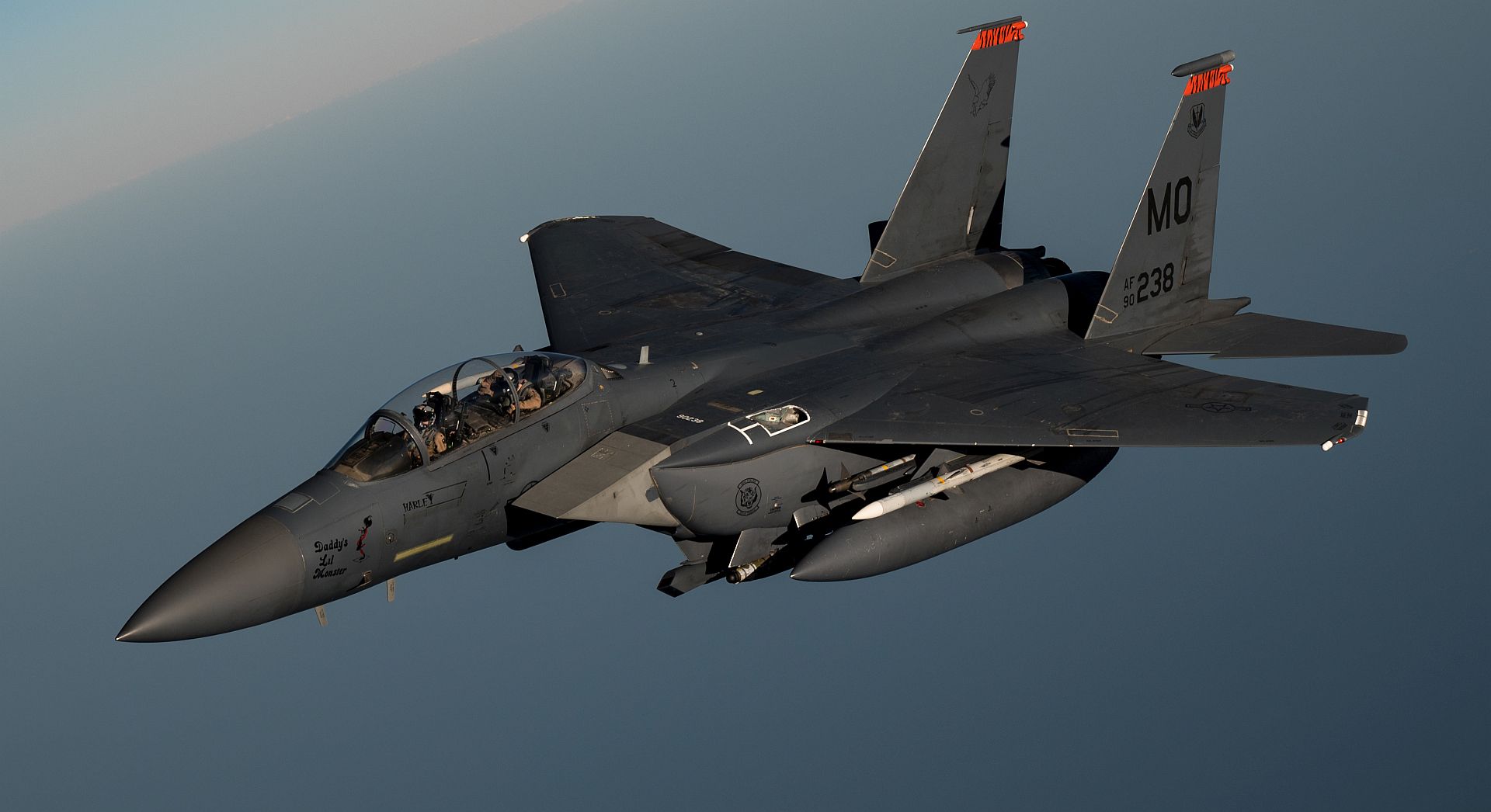
A U.S. Air Force B-52 Stratofortress flies in formation with F-16 Fighting Falcons and F-15E Strike Eagles during a Bomber Task Force mission over the U.S. Central Command area of responsibility Nov. 21, 2020. Bomber Task Force missions help aircrews gain familiarity with the region's airspace and command and control functions and allow them to integrate with the theater's U.S. and partner air assets, increasing the combined force's overall readiness. (U.S. Air Force photos by Staff Sgt. Sean Carnes)
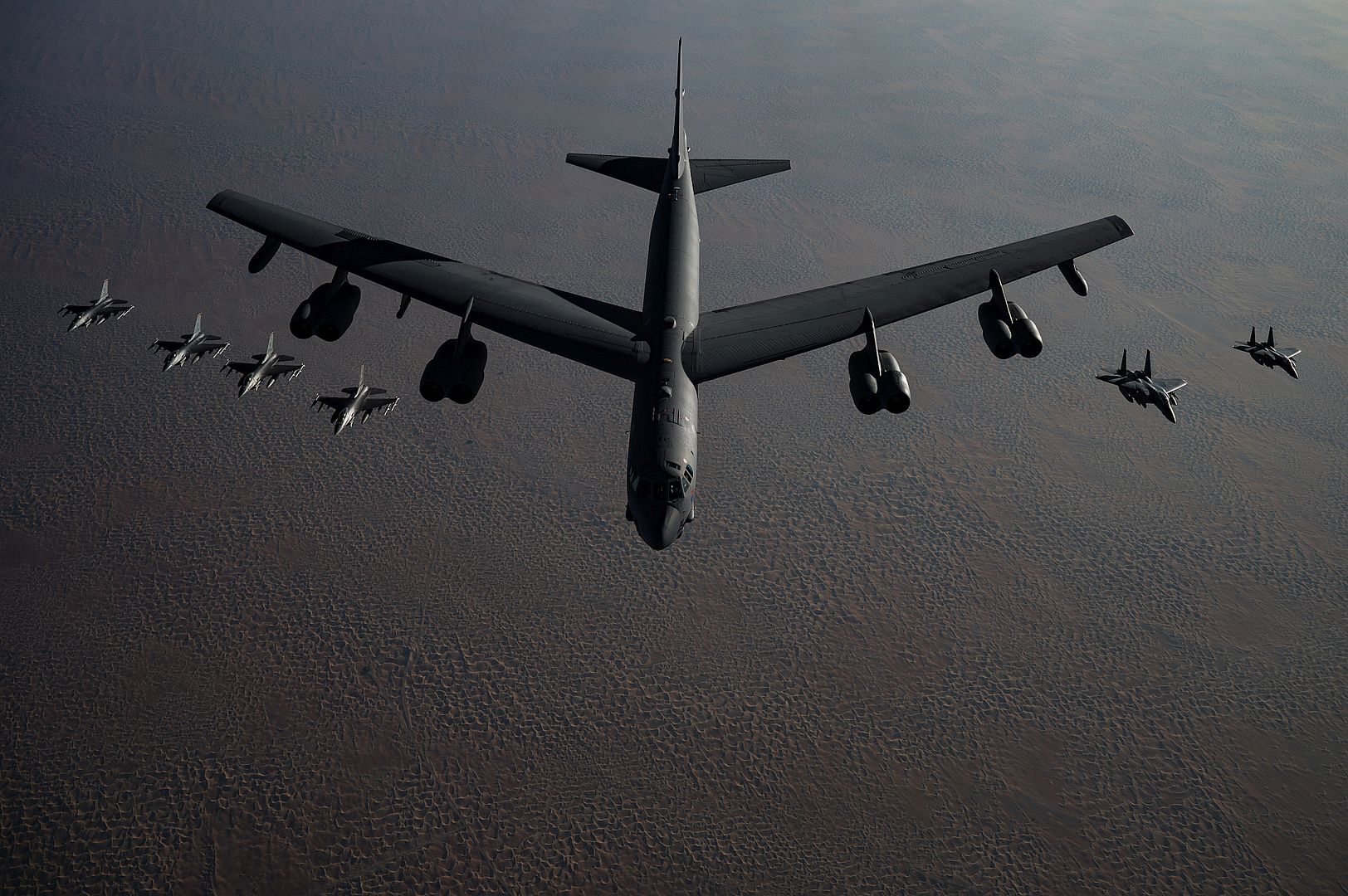
(Nov. 23, 2020) KEY WEST, Fla. -A MK-58 Hawker Hunter from contract adversary squadron ATAC prepares for takeoff at Naval Air Station Key West?s Boca Chica Field. ATAC is supporting Super Hornets from Strike Fighter Squadron (VFA) 106 as they conduct air-to-air combat training in the air ranges off the coast of Florida. Naval Air Station Key West is the state-of-the-art facility for combat fighter aircraft of all military services, provides world-class pierside support to U.S. and foreign naval vessels, and is the premier training center for surface and subsurface military operations. (U.S. Navy photo by Mass Communications Specialist 3rd Class Arnesia McIntyre/Released)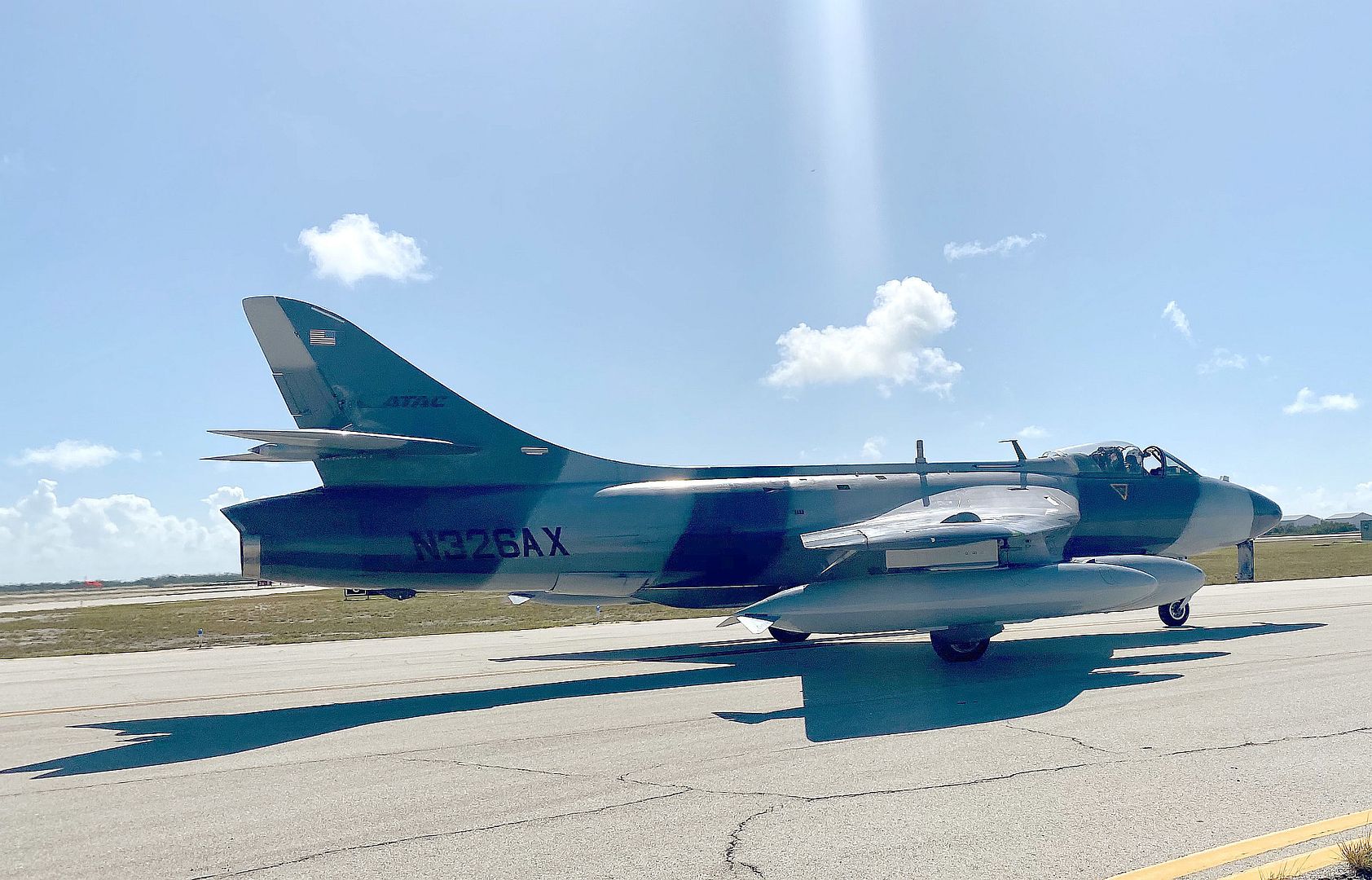
(Nov. 23, 2020) KEY WEST, Fla. - Super Hornet from Strike Fighter Squadron (VFA) 106 prepare for takeoff at Naval Air Station Key West?s Boca Chica Field. VFA-106 is conducting air-to-air combat training in the air ranges off the coast of Florida. Naval Air Station Key West is the state-of-the-art facility for combat fighter aircraft of all military services, provides world-class pierside support to U.S. and foreign naval vessels, and is the premier training center for surface and subsurface military operations. (U.S. Navy photo by Mass Communications Specialist 3rd Class Arnesia McIntyre/Released)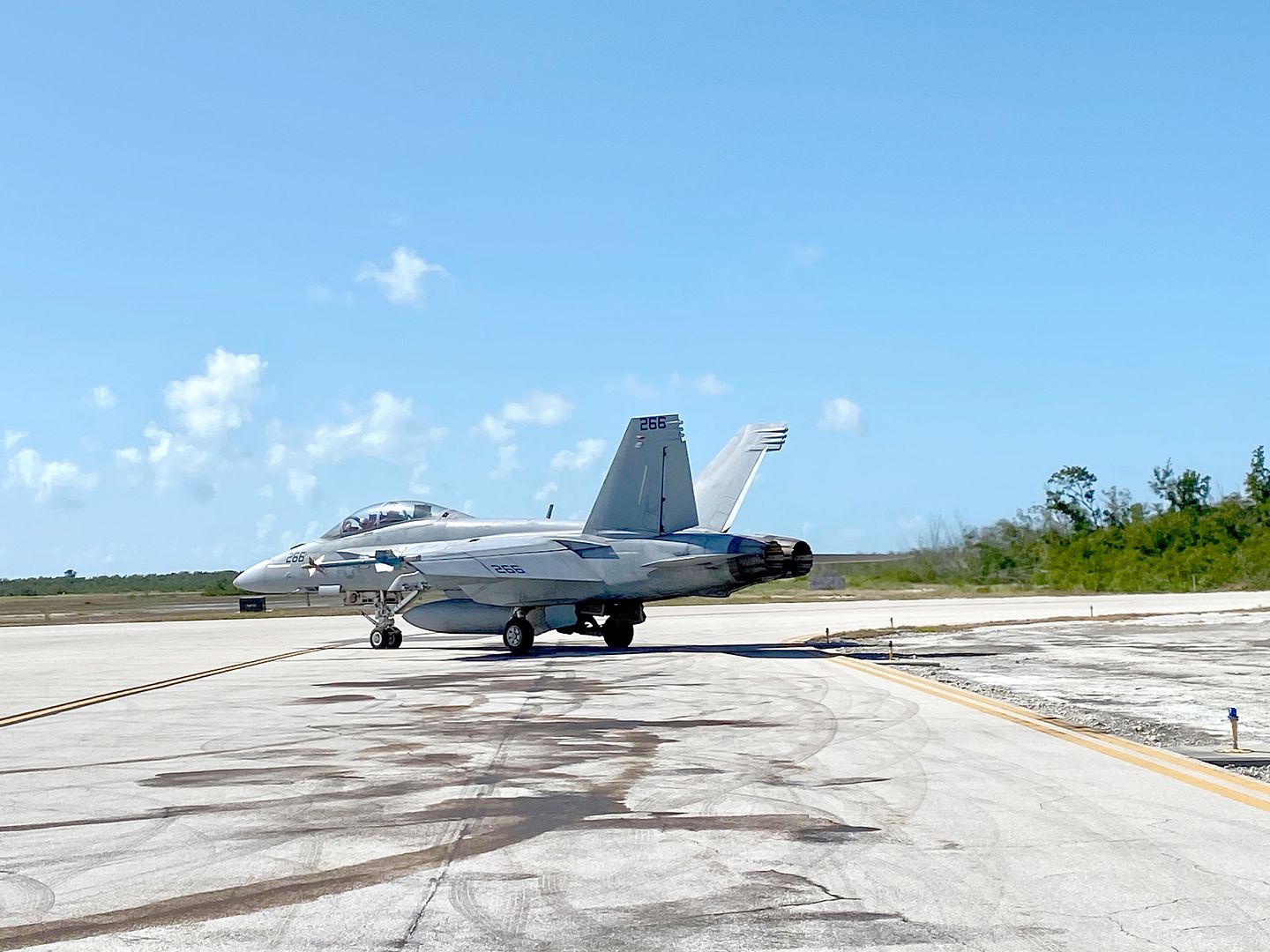
F-16 Fighting Falcons from the 311th Fighter Squadron, flie above New Mexico during an aerial refueling training mission Nov. 20, 2020. (U.S. Air Force photos by Senior Airman Mary Begy)

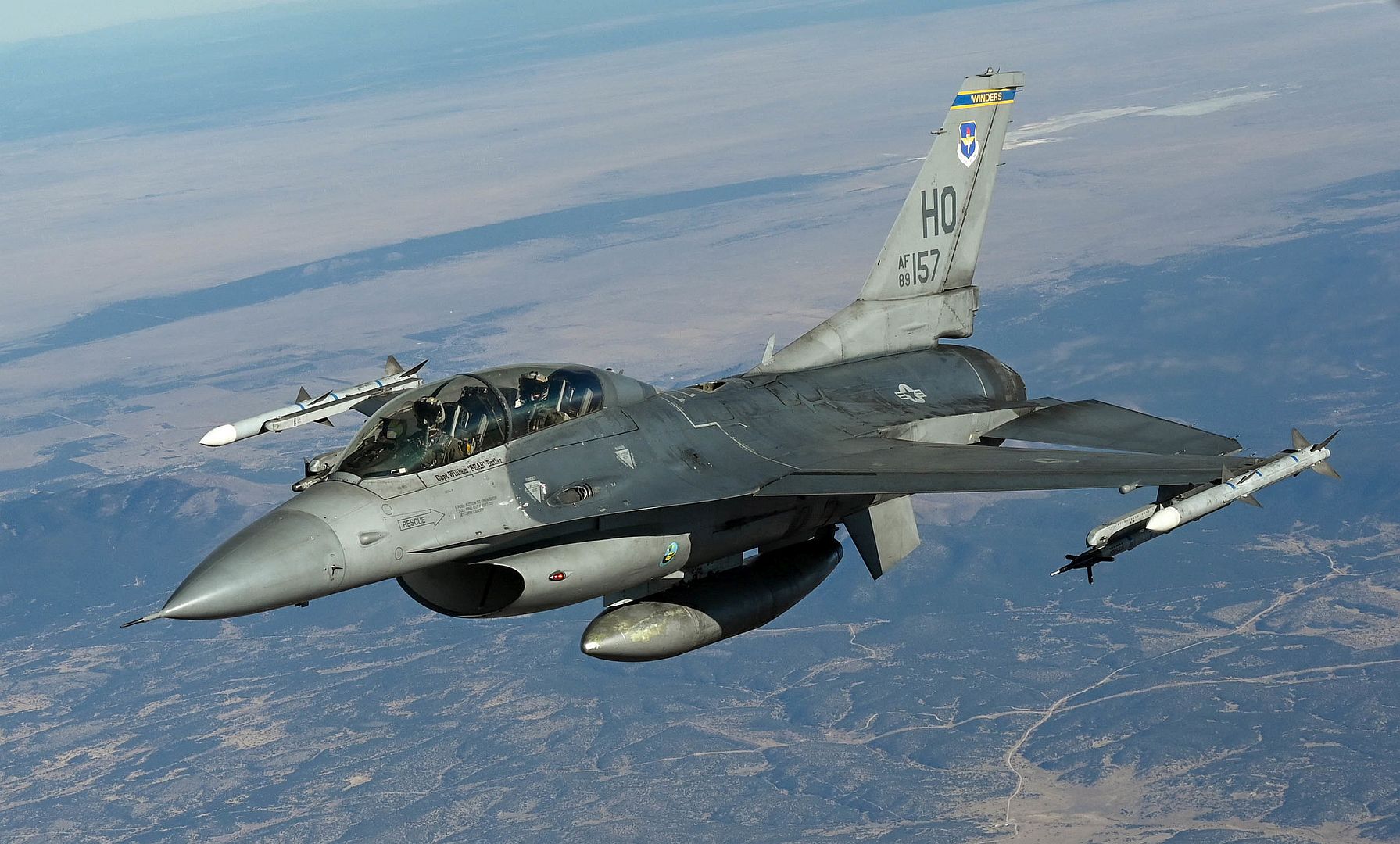
PACIFIC OCEAN (Nov. 20, 2020) A CMV-22B Osprey from the ?Titans? of Fleet Logistics Multi-Mission Squadron (VRM) 30 lands on the flight deck of the Nimitz-class aircraft carrier USS Carl Vinson (CVN 70). This evolution marked the first time the Navy?s CMV-22B Ospreys have landed on a carrier. Carl Vinson is currently underway conducting routine maritime operations. (U.S. Navy photo by Mass Communication Specialist 3rd Class Aaron T. Smith)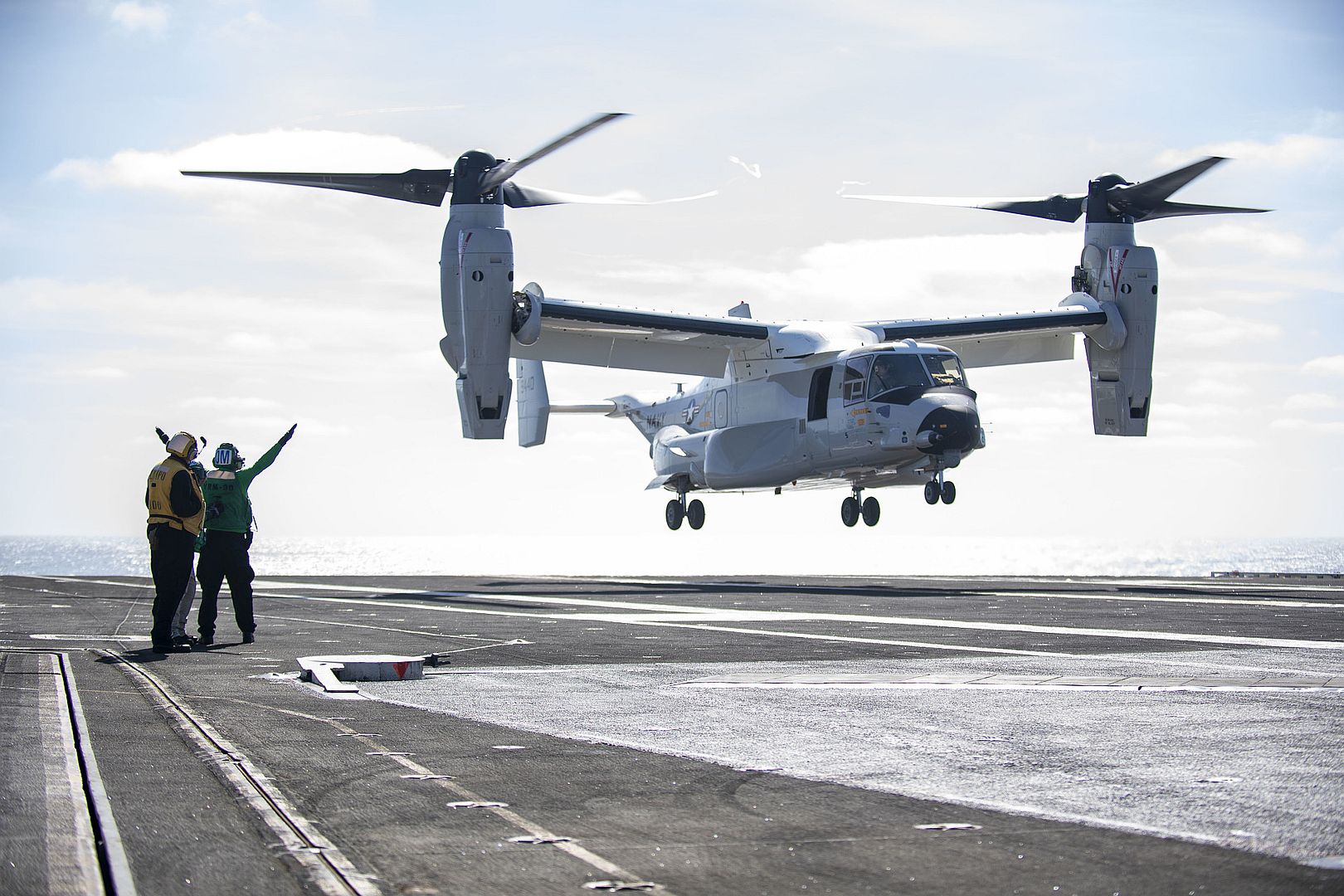
Marignane, 23 November 2020 ? ExxonMobil has signed a contract for two Airbus H145 helicopters to support the PNG LNG Project* in Papua New Guinea (PNG).
The new H145 model with a five-blade, bearingless main rotor provides a 150kg increase in useful load.
The aircraft will be based at the Hides Gas Conditioning Plant (HGCP) in Hela Province of the PNG Highlands, and will be used to transport personnel and equipment in support of PNG LNG Project operations.
In addition to its reliability and superior economics, the new H145?s ?hot and high? performance was critical to its selection for use in an environment requiring routine operations at an altitude of 5,400ft in temperatures up to 35?C.
The sale is the first by Airbus Helicopters to ExxonMobil and the first order in the oil and gas sector for the new H145 in the Asia Pacific region.
Ben Bridge, Executive Vice President Global Business, for Airbus Helicopters said ?It?s an honour to win the confidence of a safety and performance focused customer like ExxonMobil for operations in PNG?s highly demanding operational environment. The new H145 has made a strong start in the market and it?s clear that it has a great future across multiple market segments.?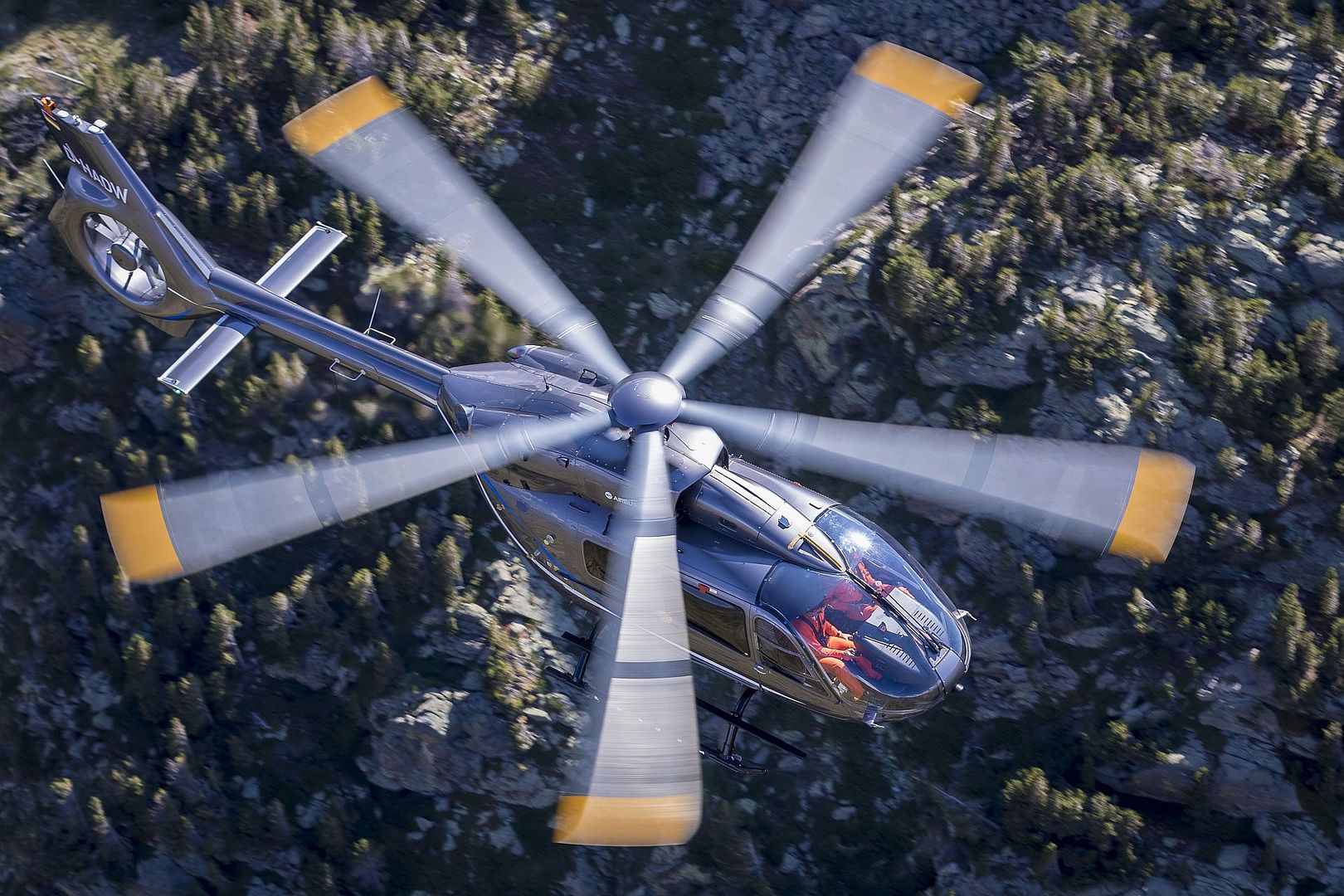
-
 Main AdminBARKSDALE AIR FORCE BASE, La. (AFNS) -- Two U.S. Air Force B-52H Stratofortress aircraft participated in ?Brother?s Shield,? a Colombian Air Force led exercise, and in ?UNITAS LXI,? an Ecuadorian Navy led exercise, in the U.S. Southern Command?s area of responsibility Nov. 8.
Main AdminBARKSDALE AIR FORCE BASE, La. (AFNS) -- Two U.S. Air Force B-52H Stratofortress aircraft participated in ?Brother?s Shield,? a Colombian Air Force led exercise, and in ?UNITAS LXI,? an Ecuadorian Navy led exercise, in the U.S. Southern Command?s area of responsibility Nov. 8.
This twofold mission began well before the B-52H crews took off that morning. There had been countless teleconferences and planning meetings to coordinate the combined training exercises between the U.S. Air Force and our partner nation?s militaries.
Brother?s Shield was the first mission to be completed celebrating the Colombian Air Forces 101st anniversary. The B-52H crews supported the Colombian Air Force Kfir fighter aircraft pilots in air-to-air interception training while developing interoperability capabilities in order to increase hemispheric security and regional stability under NATO standards between the U.S. and Colombia.
U.S. Air Force Maj. Angel Serna, 12th Air Force (Air Force Southern) Colombia desk officer, explained that the name of the exercise ?Brother?s Shield? developed from the close relationship between the U.S. Air Force and the Colombian Air Force. During this training mission, the Colombian Kfirs flew in a formation with the U.S. Air Force B-52Hs in order to shield them from enemy combatants.
?Anytime we have the privilege to integrate with our allies in a fighter integration or naval exercise, we are excited,? said U.S. Air Force Capt. Joshua Henry, 96th Bomb Squadron B-52H pilot and mission lead. ?We identified a lot of similarities in the way that the Colombian?s conduct their intercept training, and working with the UNITAS exercise proved to be very beneficial as well. Further developing our tactics, techniques and procedures with the navy is always beneficial for us as an air player since this is not something we have the opportunity to train on a consistent basis with real time naval assets.?
UNITAS is an annual naval exercise conducted in the Atlantic and Pacific waters around Central and South America. The Ecuadorian Navy hosted this year?s exercise Nov. 2-11, with participants from eleven countries. The B-52 crews integrated and trained with joint forces for UNITAS to include the Ecuadorian Navy to provide a simulated dynamic targeting capability for naval forces.
?I haven?t worked with the Colombian or Ecuadorian militaries before, but anytime that we as a community have an opportunity to work with partner nations, we always learn a lot,? Henry said. ?Colombia and Ecuador were very professional, and a lot of our lessons learned were developed from the planning stages.?
(Colombian Air Force courtesy photo)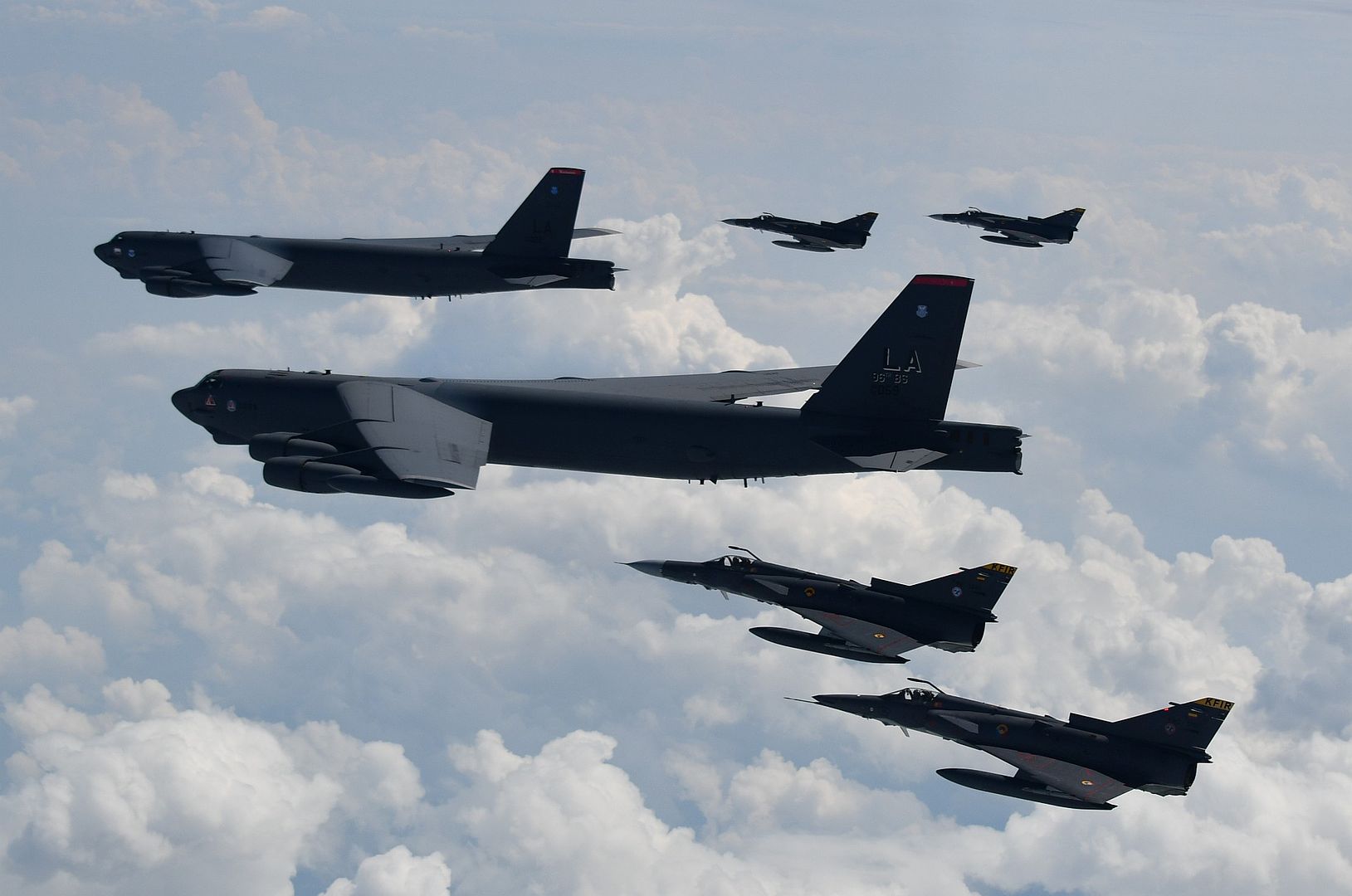
Pilots and students assigned to Marine Fighter Attack Training Squadron 501 conduct a max effort launch with 21 F-35B Lightning II aircraft aboard Marine Corps Air Station Beaufort, Nov. 24. The training allowed the unit to conduct a days-worth of flights in a single launch. (U.S. Marine Corps photo illustration by Staff Sgt. Brittney Vella)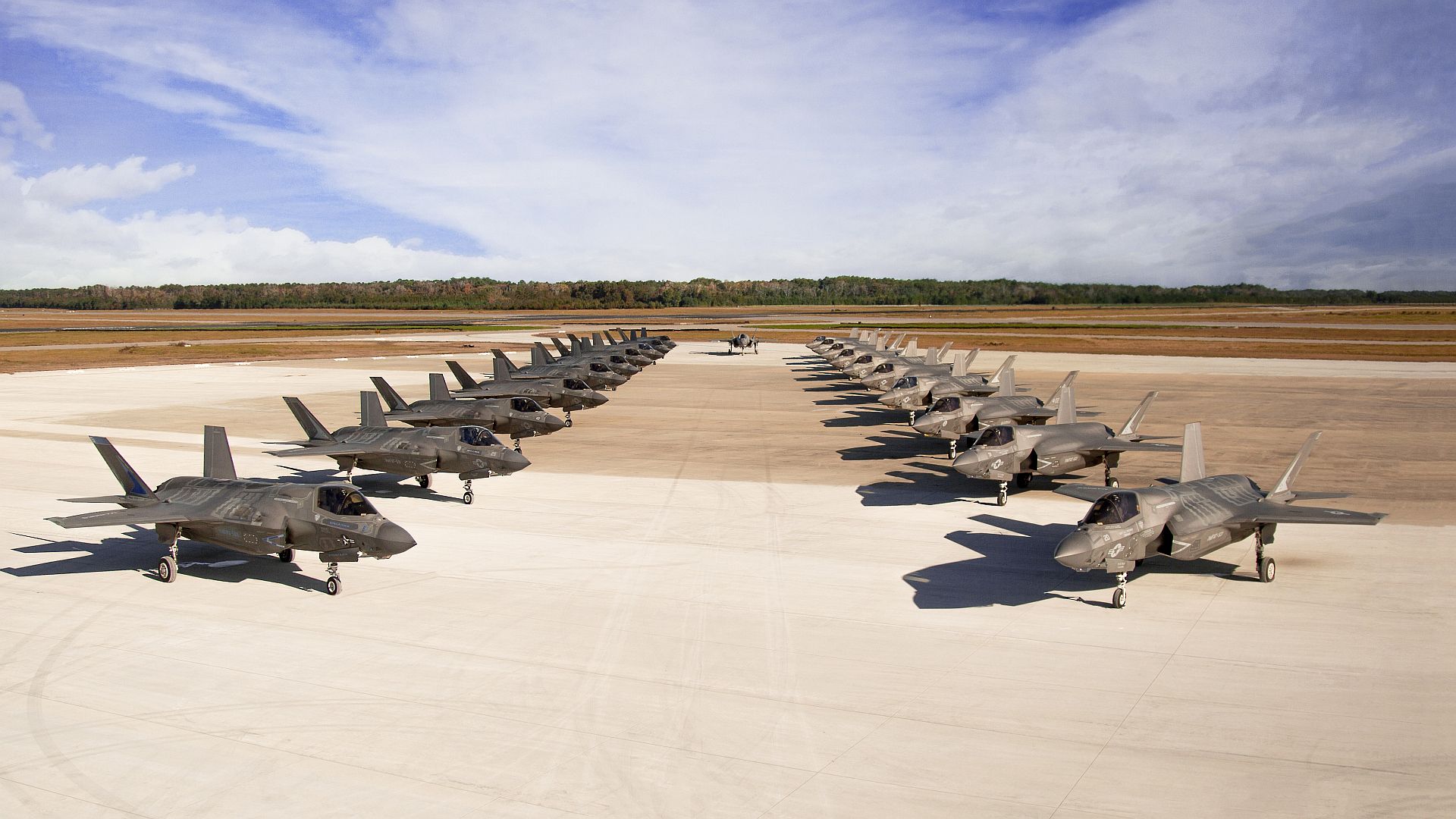
U.S. Air Force Staff Sgt. Jacob Bonter, a dedicated crew chief assigned to the 94th Fighter Squadron, salutes to an F-22 assigned to the 94th FS as it taxies off after completing a hot refuel during a Dynamic Force Employment at Andersen Air Force Base, Guam, Nov. 22, 2020. DFE is an operational platform that allows our forces to be strategically predictable and operationally unpredictable. The United States security presence, along with our allies and partners, underpins the peace and stability that has enabled the Indo-Pacific region to develop and prosper for more than seven decades. (U.S. Air Force photo by Senior Airman Michael S. Murphy)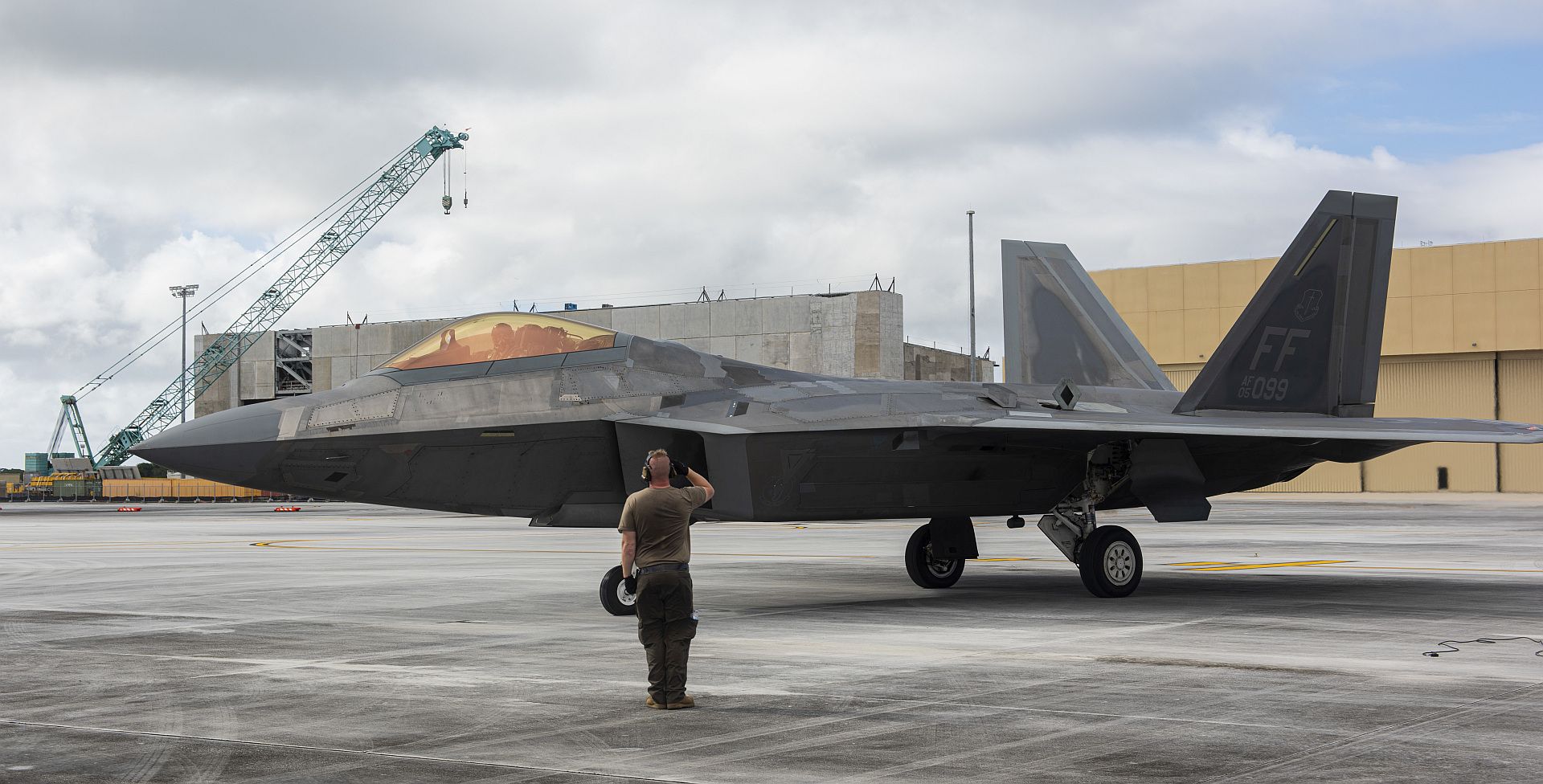
24.11.2020.
The crews of the Tu-160 and Il-78 long-range aircraft have completed long flights with air-to-air refuelling.
The flight duration was more than 8 hours. The flights took place in difficult weather conditions with a strong crosswind.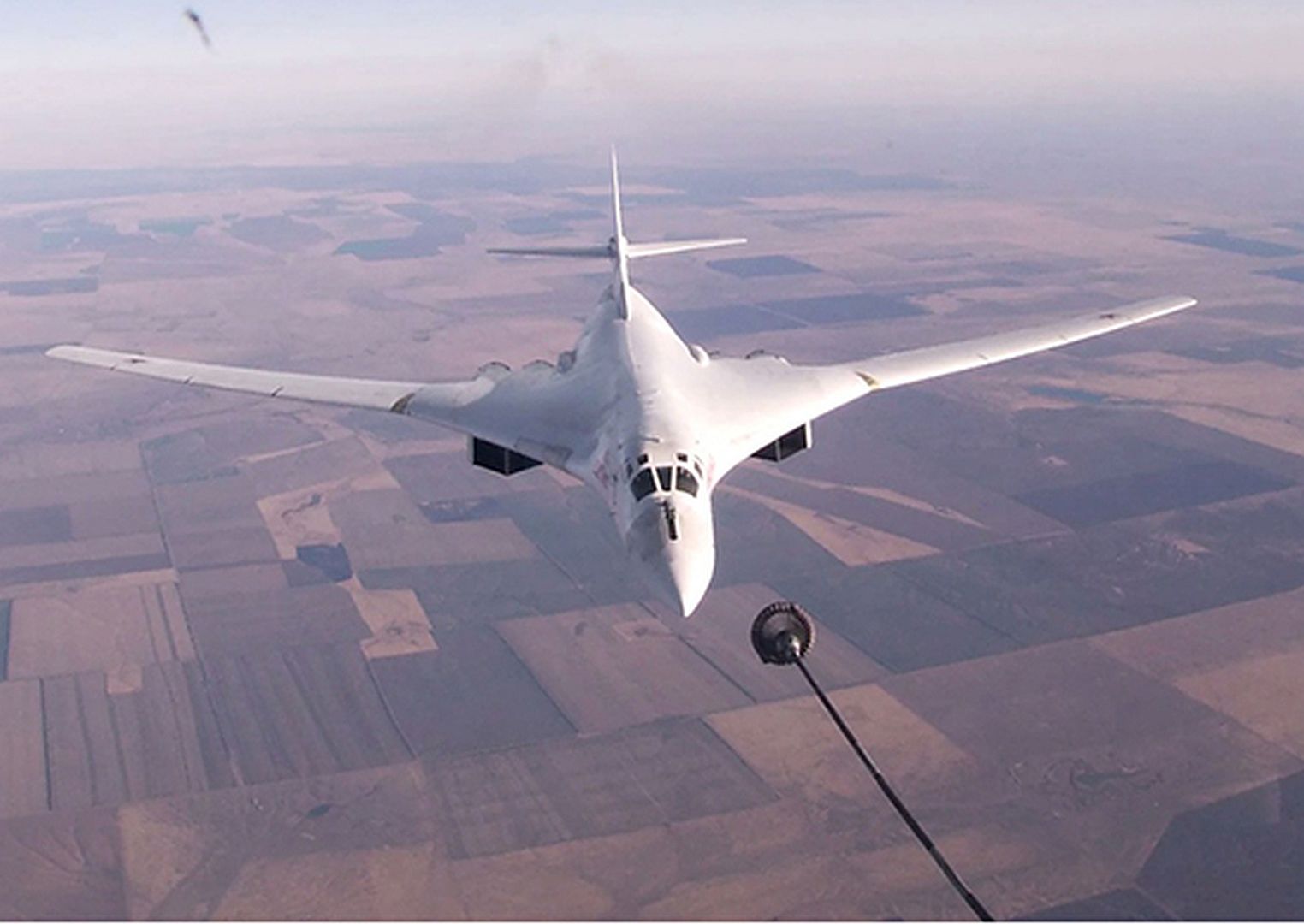
Refuelling was carried out in the daytime and at night at altitudes over 5,000 meters and a speed of about 600 kilometres per hour. At the same time, the distance between the planes was less than 30 meters.
In total, up to 10 long-range aircraft were involved in the flights.
Air-to-air refuelling, as one of the most difficult elements of flight training, is a necessary element in the training of long-range aviation pilots, which makes it possible to significantly increase the combat radius of action and perform missions as intended at a great distance from the base
(Photos courtesy of the Ministry of Defence of the Russian Federation)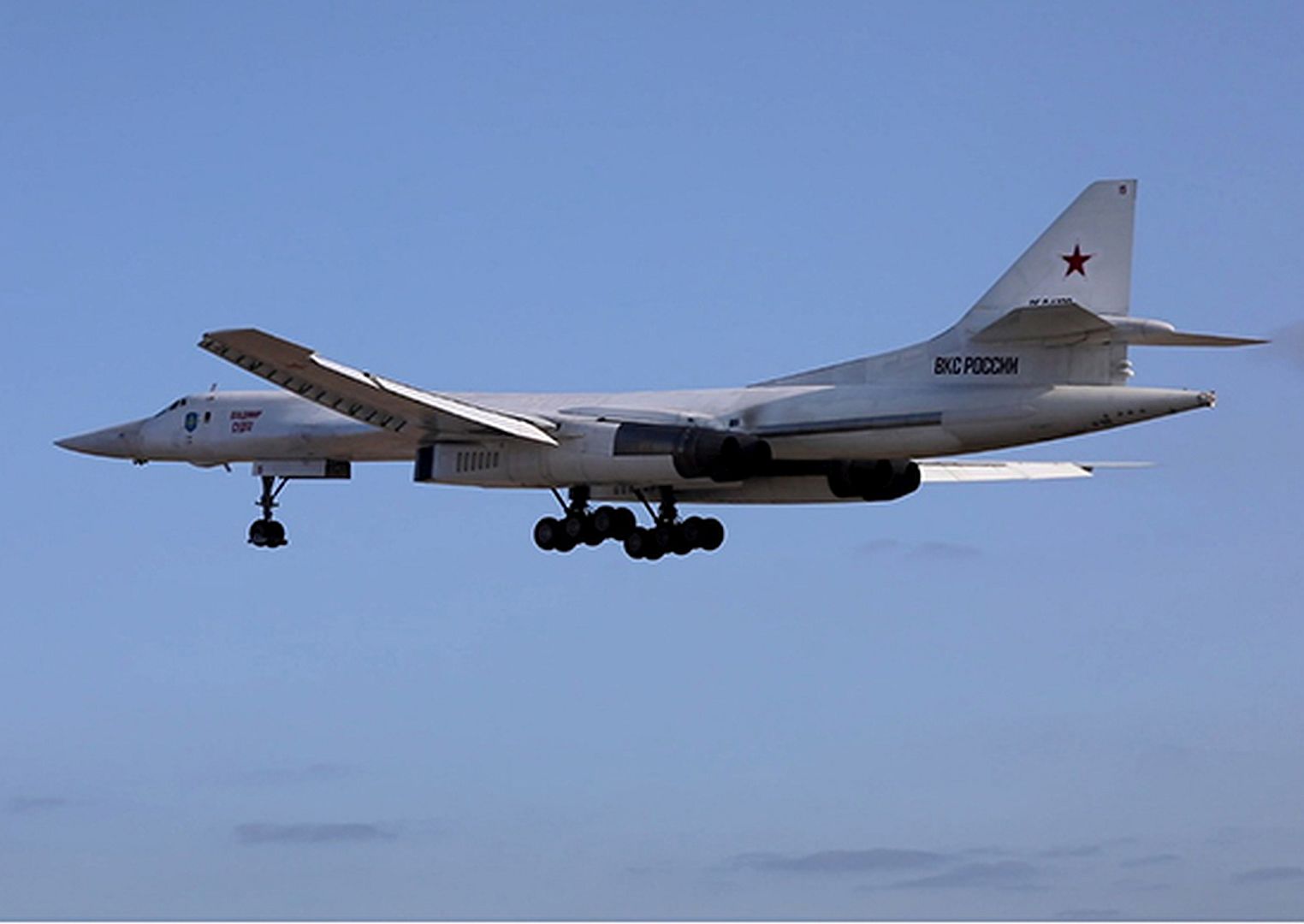
-
 Main AdminAn F-15C Eagle assigned to the 493rd Fighter Squadron taxis down the flightline at Royal Air Force Lakenheath, England, Nov. 23, 2020. The Liberty Wing maintains combat readiness through daily training to ensure the collective defense of the NATO alliance. (U.S. Air Force photo by Airman 1st Class Jessi Monte)
Main AdminAn F-15C Eagle assigned to the 493rd Fighter Squadron taxis down the flightline at Royal Air Force Lakenheath, England, Nov. 23, 2020. The Liberty Wing maintains combat readiness through daily training to ensure the collective defense of the NATO alliance. (U.S. Air Force photo by Airman 1st Class Jessi Monte)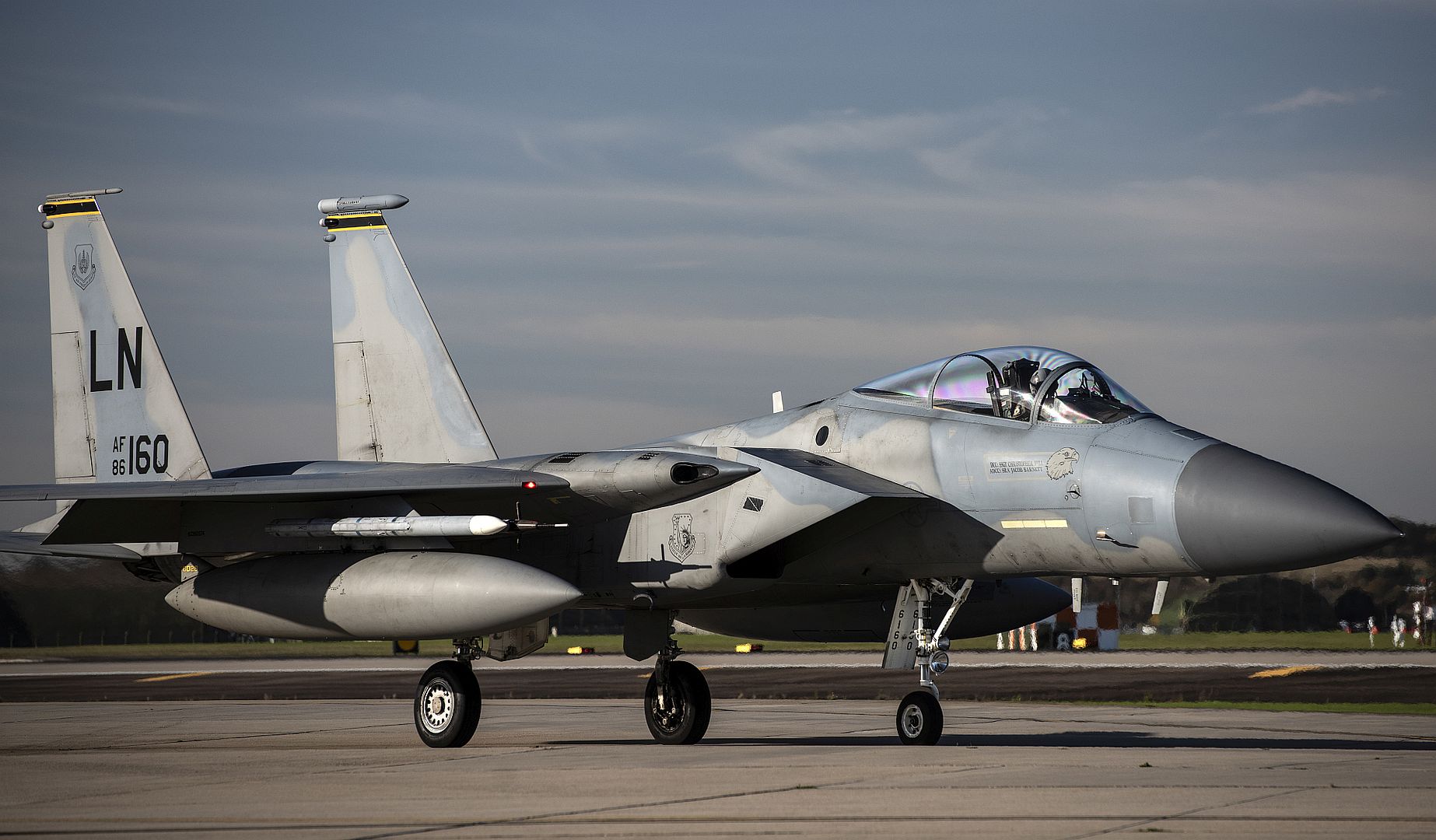
An F-15C Eagle assigned to the 493rd Fighter Squadron takes off at Royal Air Force Lakenheath, England, Nov. 23, 2020. The Liberty Wing maintains combat readiness through daily training to ensure the collective defense of the NATO alliance. (U.S. Air Force photo by Airman 1st Class Jessi Monte)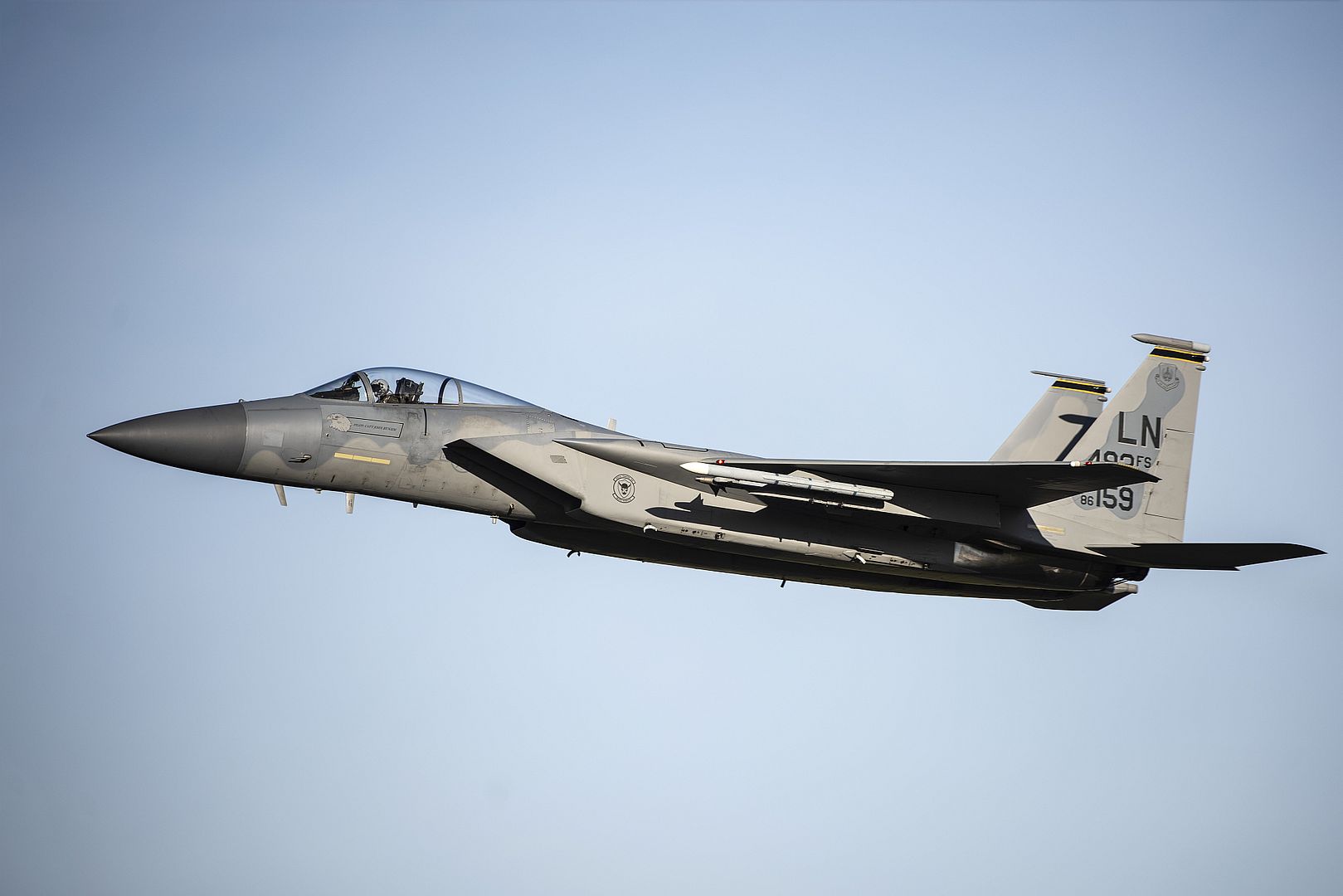
An F-15E Strike Eagle assigned to the 492nd Fighter Squadron takes off at Royal Air Force Lakenheath, England, Nov. 23, 2020. The Liberty Wing maintains combat readiness through daily training to ensure the collective defense of the NATO alliance. (U.S. Air Force photo by Airman 1st Class Jessi Monte)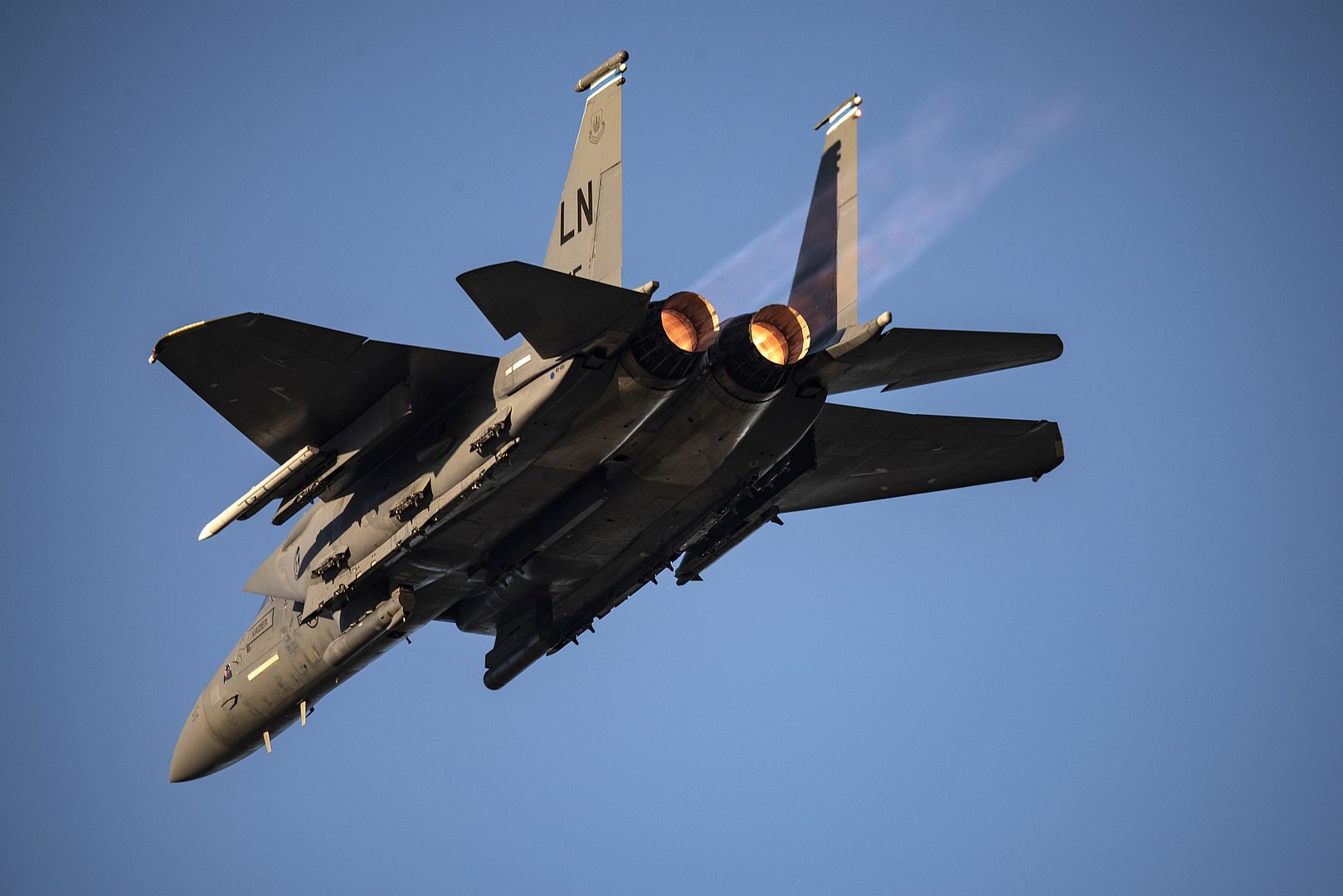
An F-15E Strike Eagle assigned to the 494th Fighter Squadron returns from a training sortie at Royal Air Force Lakenheath, England, Nov. 23, 2020. The Liberty Wing maintains combat readiness through daily training to ensure the collective defense of the NATO alliance. (U.S. Air Force photo by Airman 1st Class Jessi Monte)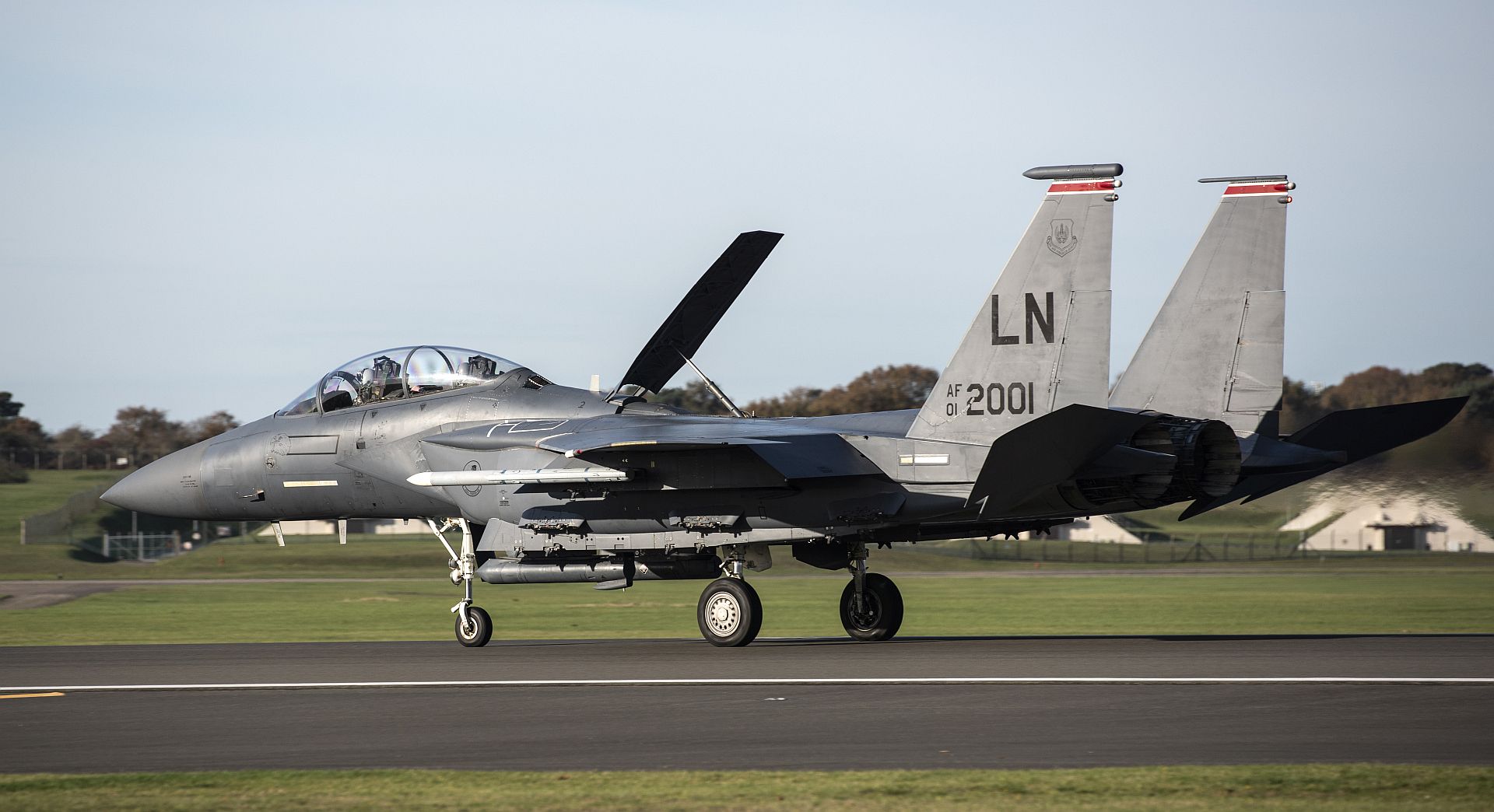
PENSACOLA, Fla. (November 23, 2020) The Blue Angels are conducting training flights over Pensacola to build flight and maintenance proficiency on the new F/A-18 E/F Super Hornet platform and maintain readiness. The 2021 show season will be the Blue Angels? first year flying the Super Hornet platform as well as the 75th anniversary of the team.(U.S. Navy photos by Mass Communication Specialist 2nd Class Cody Hendrix)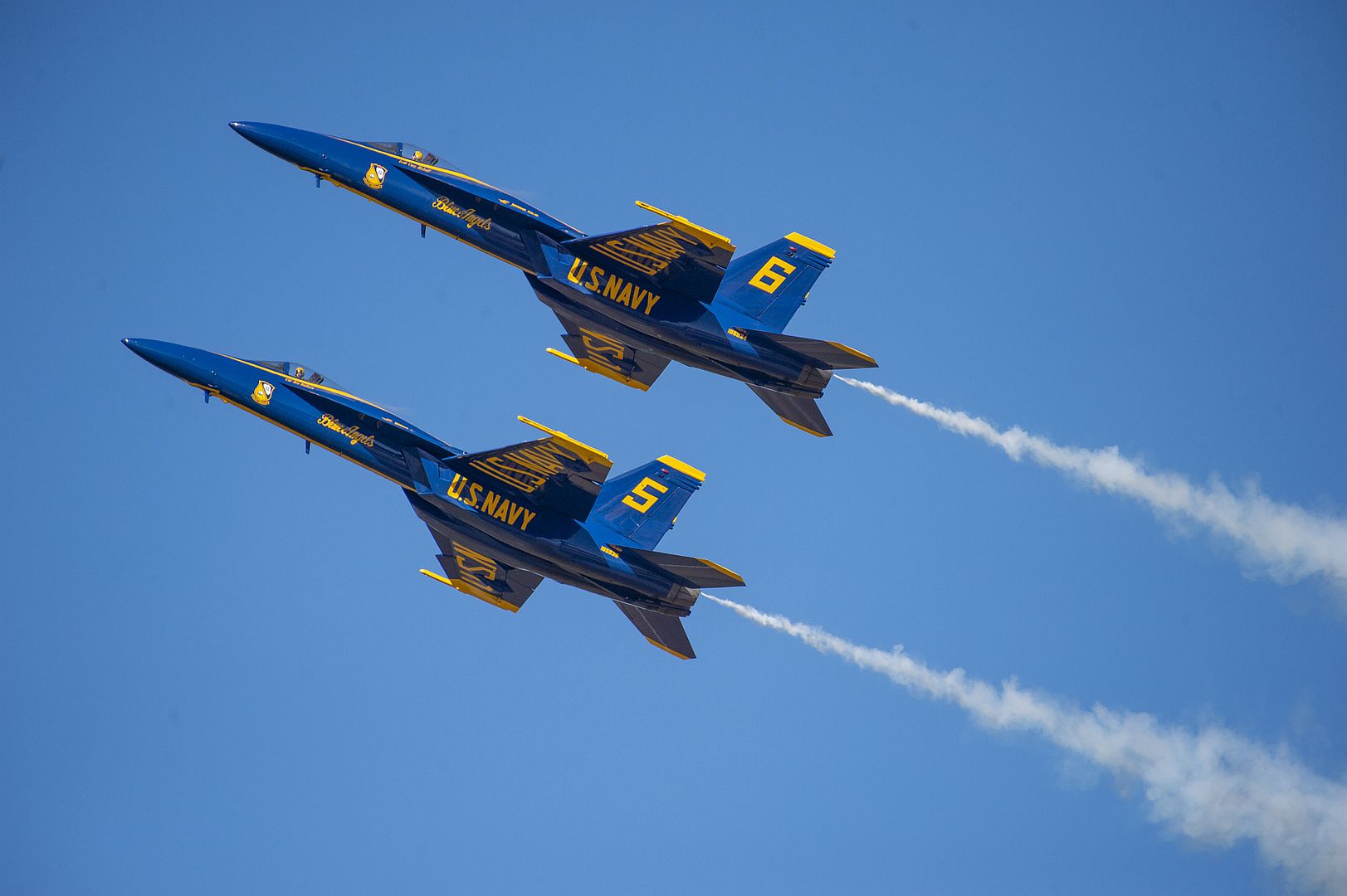
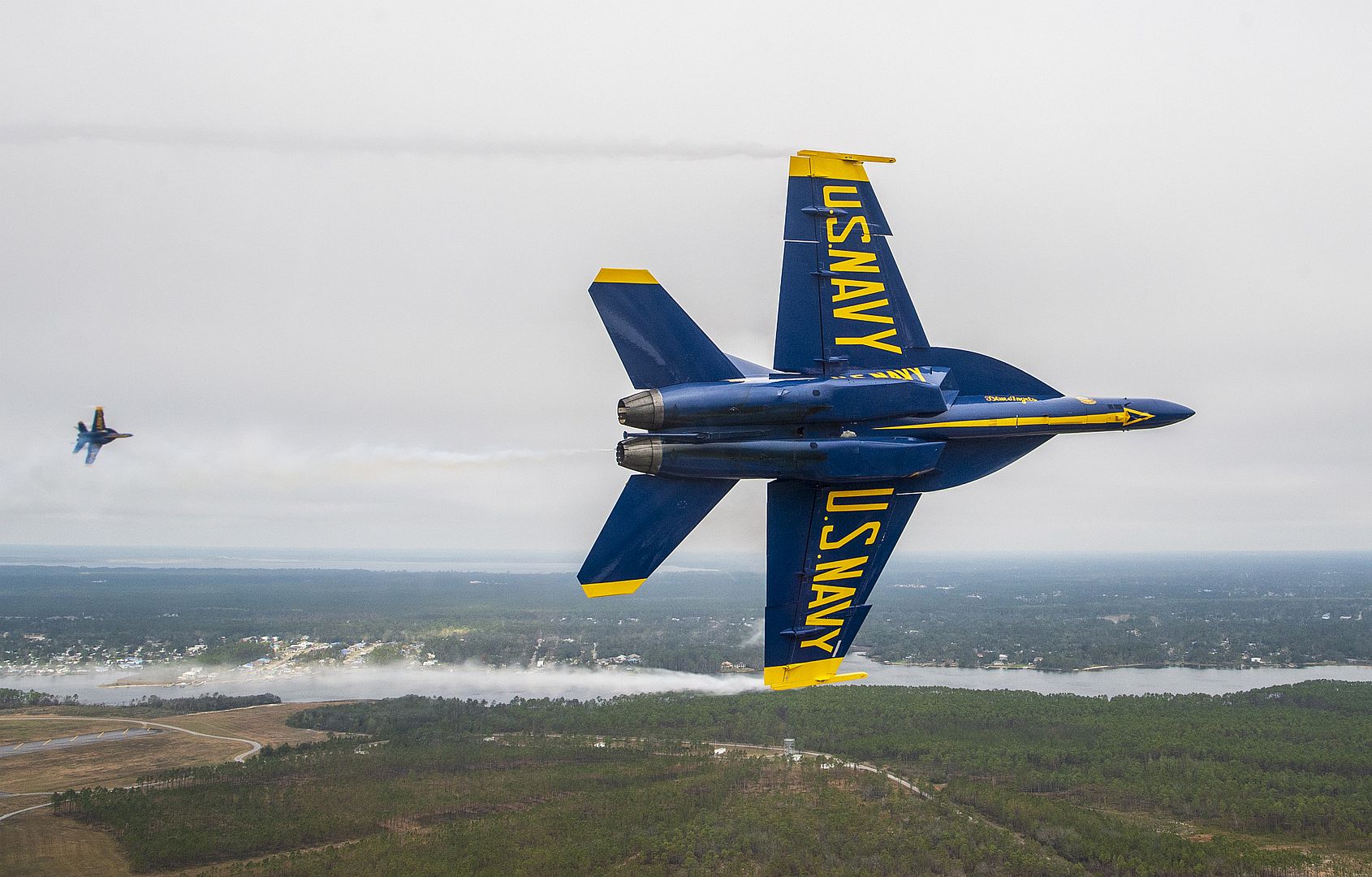
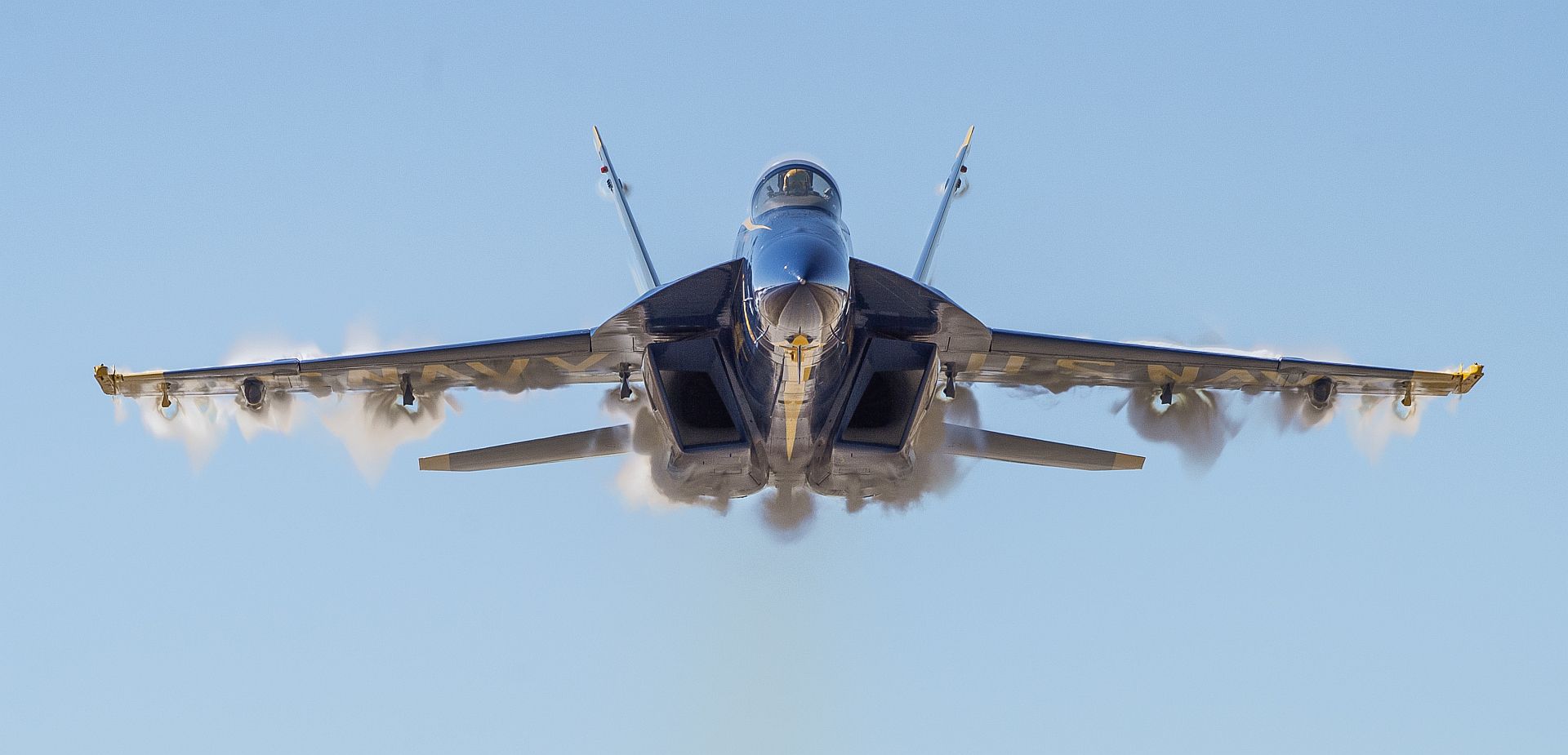

EDWARDS AFB, California --- The B-1B Lancer?s expanded carriage capabilities comes one step closer to fruition following an external captive carry flight over the skies of Edwards Air Force Base, California, Nov. 20.
The flight featured a B -1B Lancer assigned to the 412th Test Wing?s 419th Flight Test Squadron, Global Power Combined Test Force, and carried an inert Joint Air-to-Surface Standoff Missile under an external pylon for the first time.
This demonstration may pave the way possibly for the B-1B to carry hypersonic weapons externally.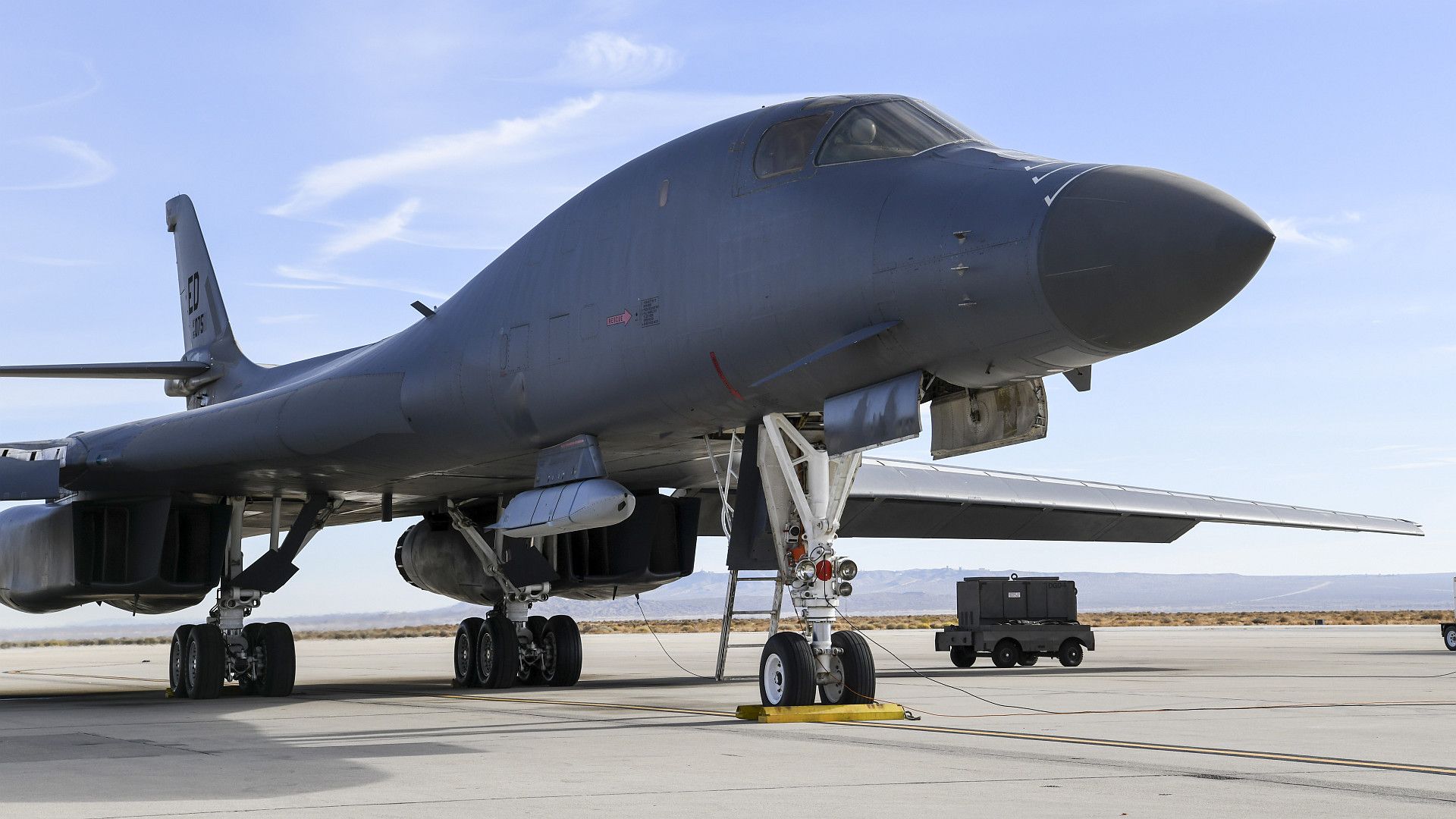
?Adapting a small number of our healthiest B-1s to carry hypersonic weapons is vital to bridge between the bomber force we have today, to the force of tomorrow,? said Gen. Tim Ray, Air Force Global Strike Command commander. ?This is a major step forward in our global precision fires capability and it is important we pursue these technologies to remain ahead of our competitors. My goal is to have a limited number of B-1s modified to become the roving linebacker of the western Pacific and the North Atlantic.
The captive carry flight was the culmination of the numerous ground tests that began with last year?s expanded carriage demonstration that included a modified internal bomb bay, which featured a moveable bulkhead. The demonstration showcased a configuration of the B-1 that would allow the aircraft to carry larger-sized weapons both internally and externally.
?We?re essentially displaying our external weapons carriage capability,? said Maj. Bret Cunningham, a B-1B test pilot with the 419th FLTS. ?We have a JASSM weapon on what is traditionally the targeting pod pylon on the forward right hard point, so we are demonstrating that the B-1 has the capability to carry weapons and employ them externally.?
This extensive engineering review will help the Air Force understand areas where it needs to focus on to maintain the B-1B as a multi-mission weapon system, potentially laying the groundwork for integration of future weapons on the aircraft.
The B-1B was initially designed to incorporate a moveable bulkhead and usable external hard points for its original nuclear mission, however the U.S. shifted the Lancer?s mission to conventional weapons in 1994. The physical conversion to conventional-only armaments started in 2007 with the Strategic Arms Reduction Treaty (START), and was finished in 2011.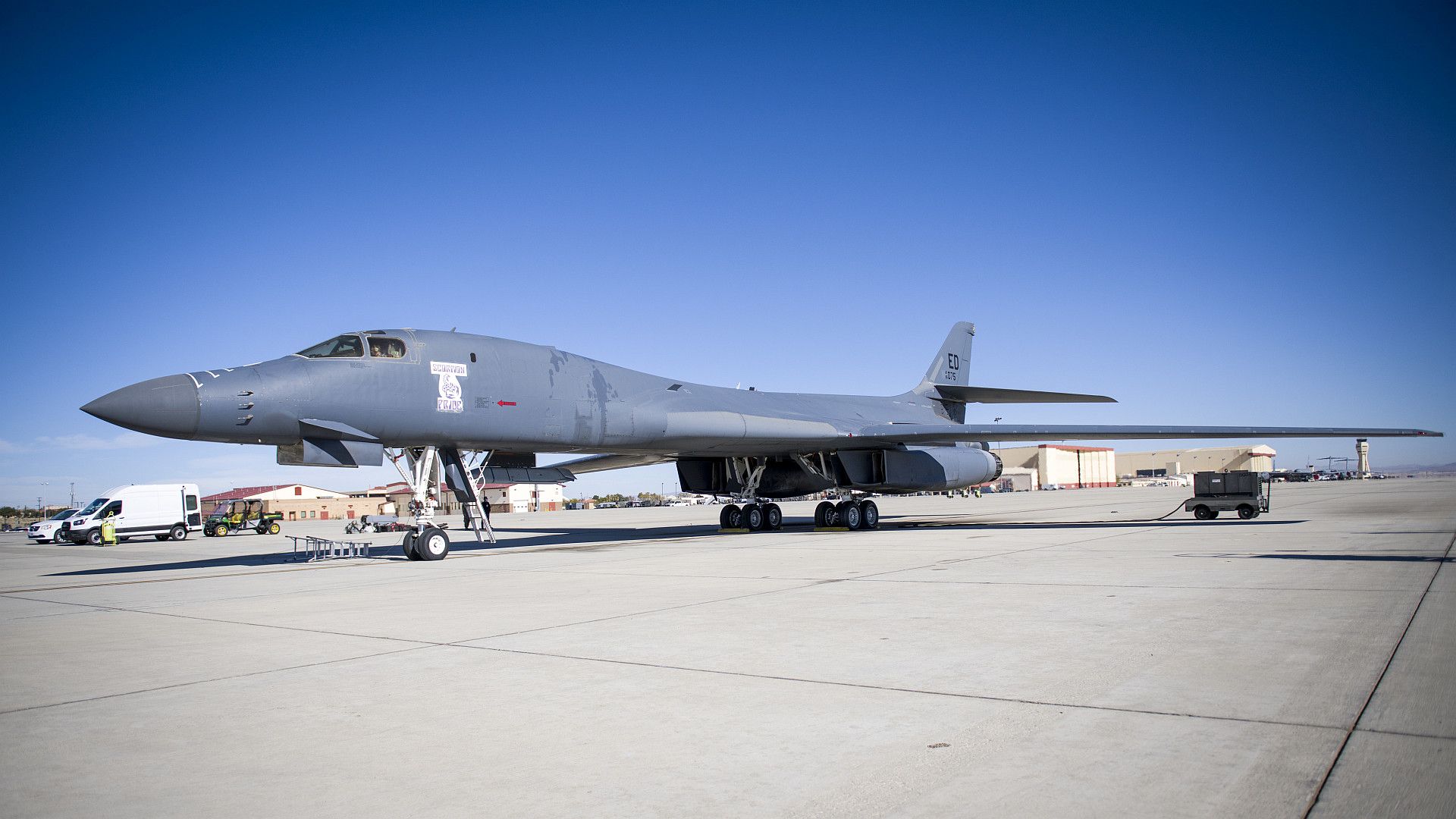
The current expanded carriage demonstrations will keep the aircraft compliant with the New START agreement, which means the Lancer can once again utilize those features while delivering conventional weapons.
?Since the long bay demo last year this has really been our key focus point in 2020; getting ready for this external weapons release demo as kind of the next step in that progression towards external weapons carriage and hypersonic capabilities for the B-1,? Cunningham said. ?We?re pretty close to the culmination of this demo event and reaching that next milestone.?
The demonstration could mean a potential boon for combatant commanders as the increase in weapons stores remedies an immediate shortfall due to the limited number of strategic bombers. The proposed increase in capacity means that two bombers would equal to three bombers? worth of weapons.
Following the captive carry mission, engineers will then review the data gathered from the flight before moving on to the next of phase of the demonstration; an external weapons release.
?For us, we?re looking to do this safely, since this is the first time we will release a weapon from the external hard point in over 30 years,? said Agustin Martinez, project test lead. ?So we pretty much focused on doing a safe build up approach?to make sure the JASSM and the B-1 are communicating correctly; the JASSM has correct surface deployment timelines so once it does get released it will safely separate.?
Engineers within the Air Force Test Center enterprise, B-1 system program office and Boeing will verify both the weapon?s and pylon?s integration with the B-1B. They are also interested in the physical effects, software, and flying qualities of the new shape on the outer mold line of the aircraft, Cunningham explained.
?The Air Force Test Center is enthusiastically teaming with Global Strike to enable greater flexibility in B-1B operational payloads,? said Maj. Gen. Christopher Azzano, AFTC commander. ?The external carriage and long-bay mods reflect our ability to keep weapon systems relevant with mid-life upgrades.?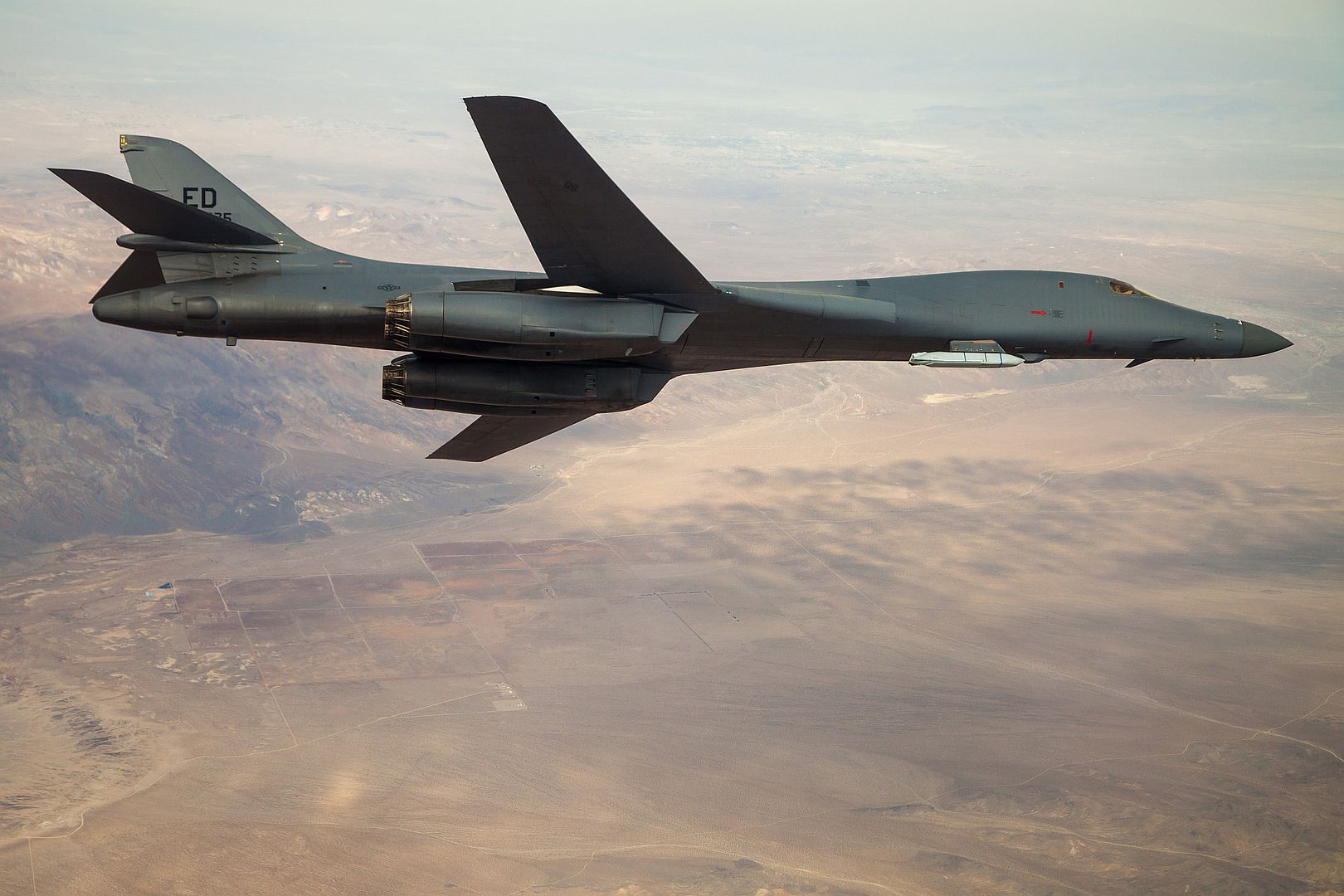
AFTC has a long history of certifying external carriage weapons, Azzano added.
That history of test success and uniqueness of the mission is not lost on testers such as Cunningham and his B-1B flight crew.
?This is a great example of how we are accelerating change to meet our adversaries, and the engineers and operators should be commended for their work in getting this demonstration completed,? Ray added. ?We will continue to invest in and modernize the bomber fleet while increasing the lethality of our global precision fires to be anywhere and anytime.?
This demonstration does not affect the Air Force?s request to retire 17 B-1B bombers in 2021.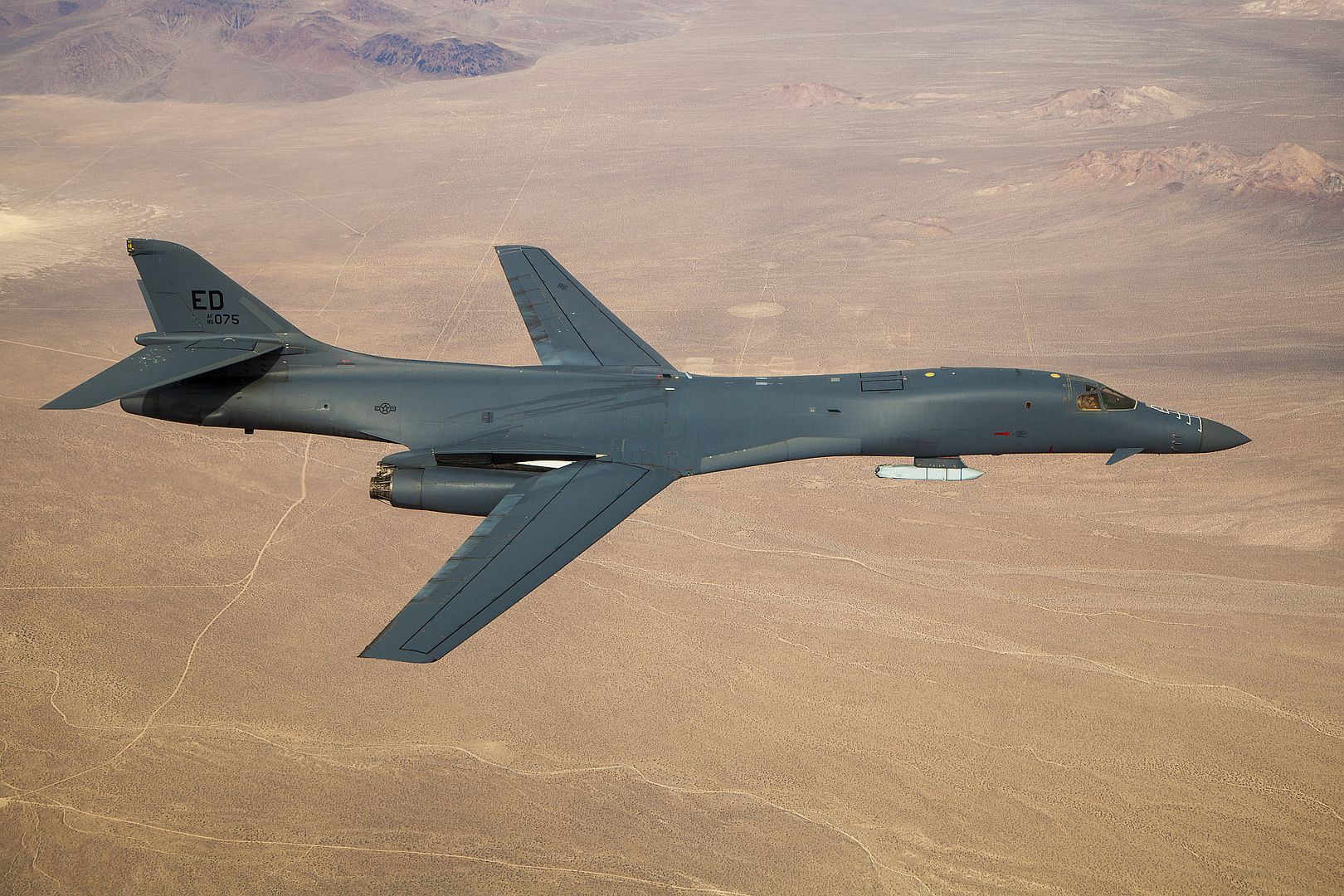
Post a reply
- Go to Next topic
- Go to Welcome
- Go to Introduce Yourself
- Go to General Discussion
- Go to Screenshots, Images and Videos
- Go to Off topic
- Go to Works in Progress
- Go to Skinning Tips / Tutorials
- Go to Skin Requests
- Go to IJAAF Library
- Go to Luftwaffe Library
- Go to RAF Library
- Go to USAAF / USN Library
- Go to Misc Library
- Go to The Ops Room
- Go to Made in Germany
- Go to Campaigns and Missions
- Go to Works in Progress
- Go to Juri's Air-Raid Shelter
- Go to Campaigns and Missions
- Go to Works in Progress
- Go to Skinpacks
- Go to External Projects Discussion
- Go to Books & Resources
